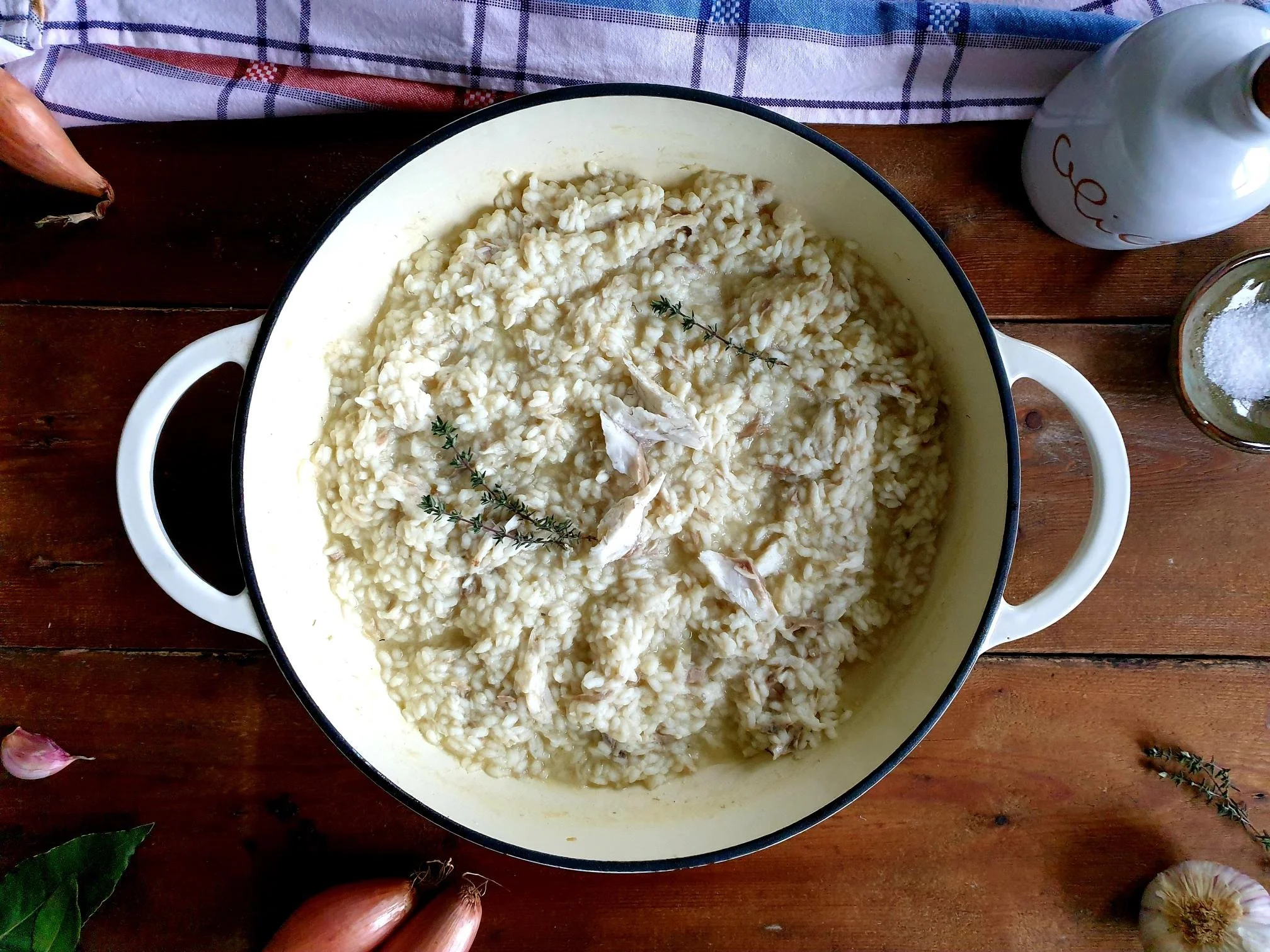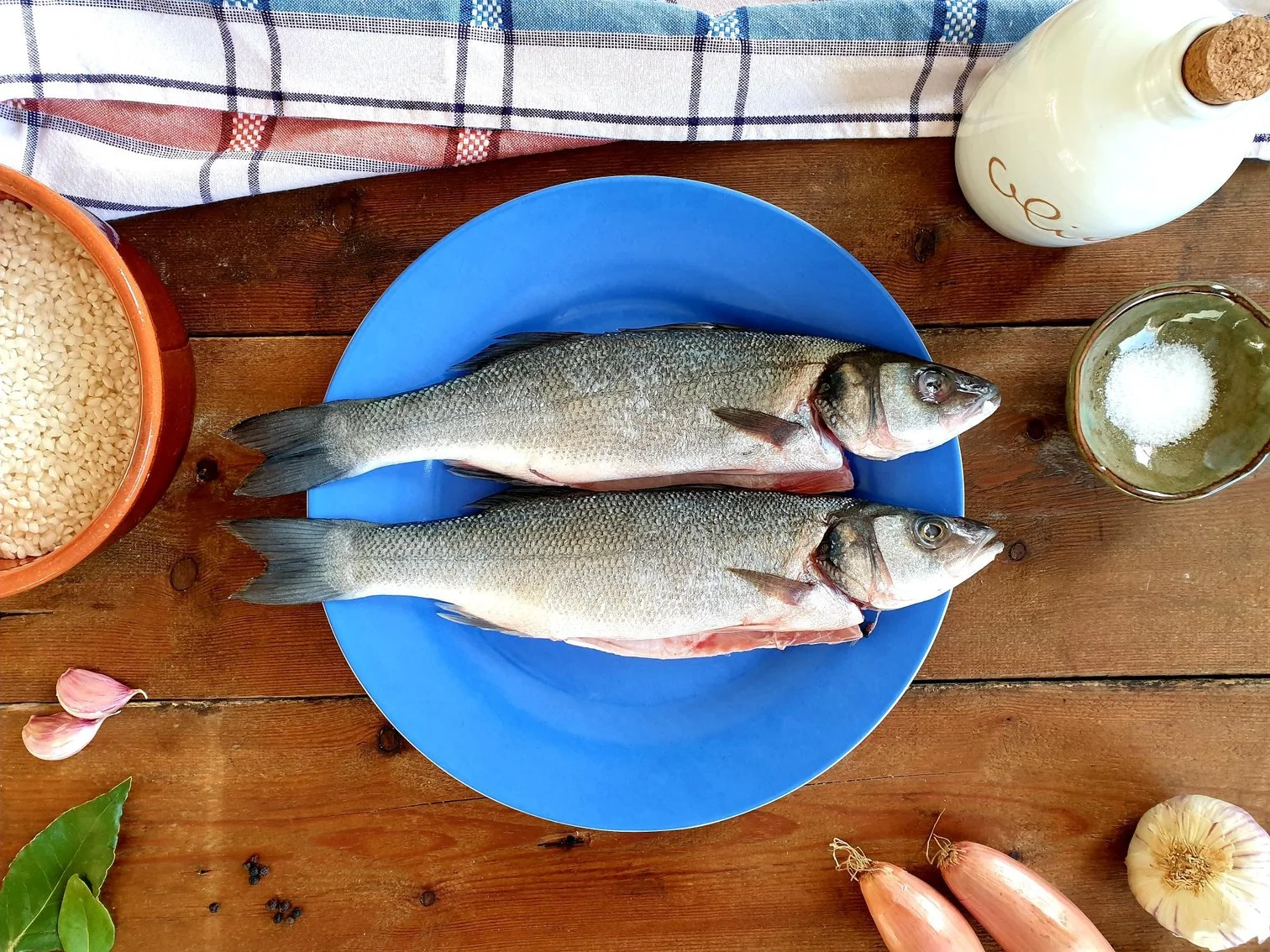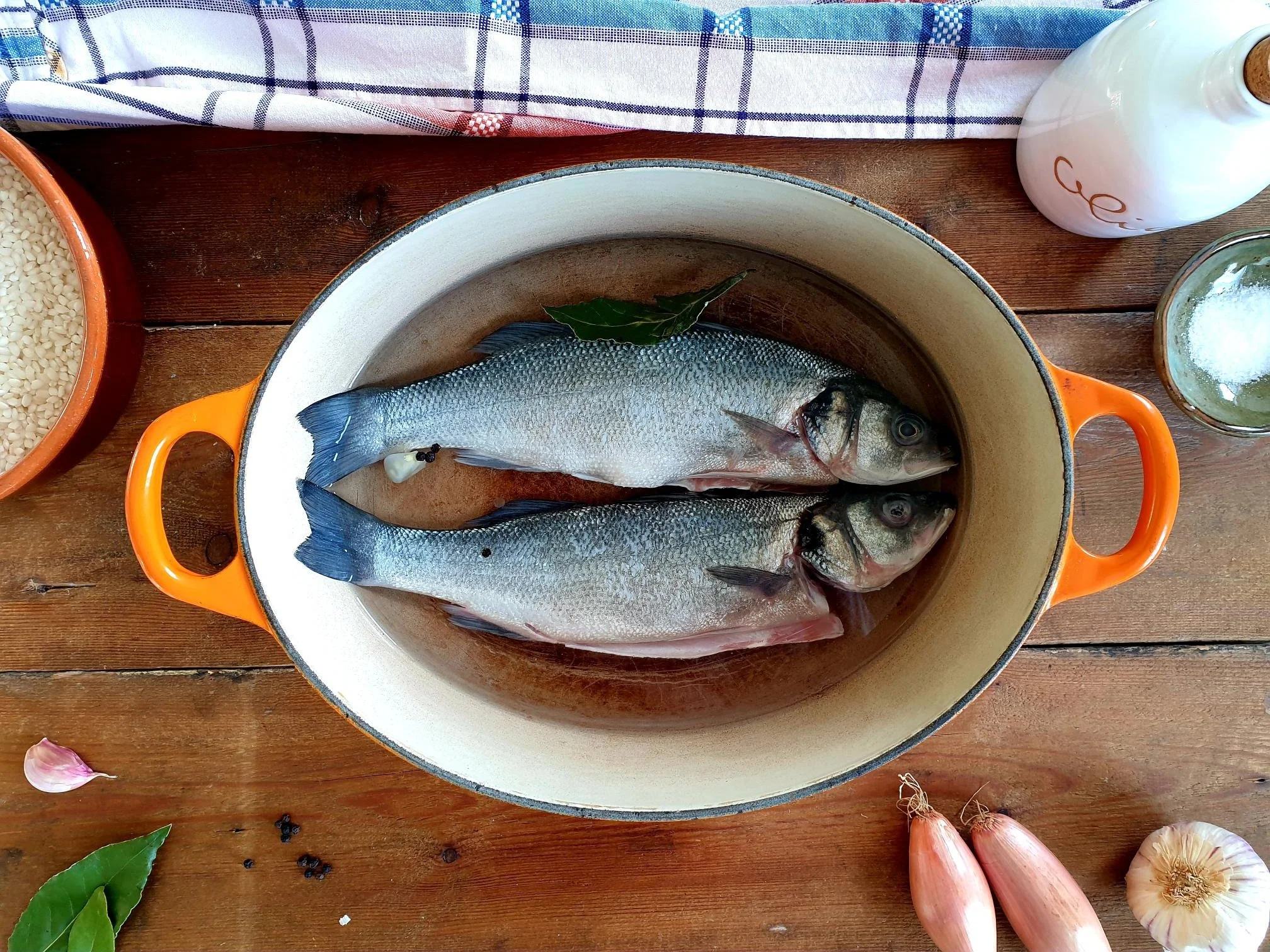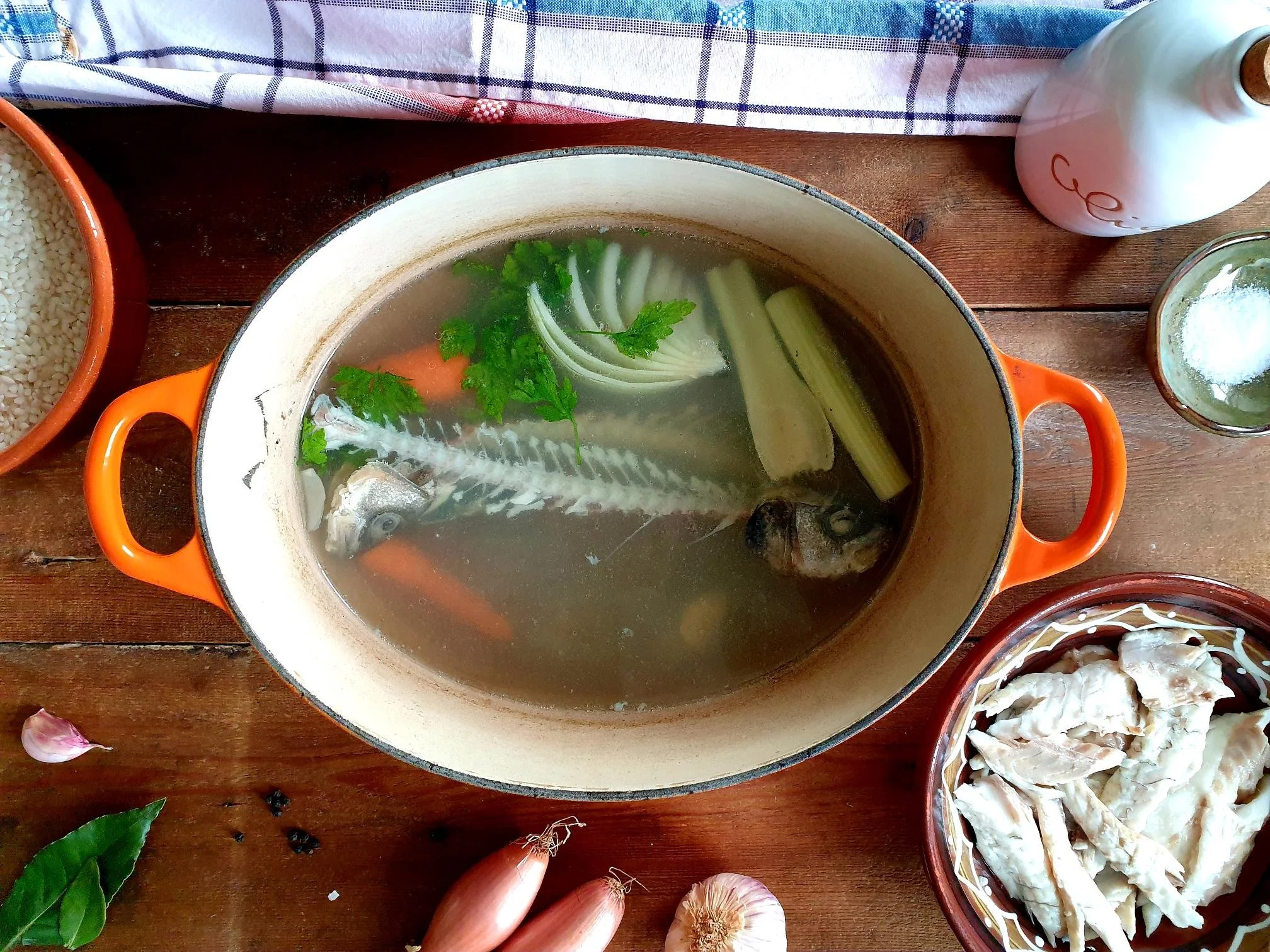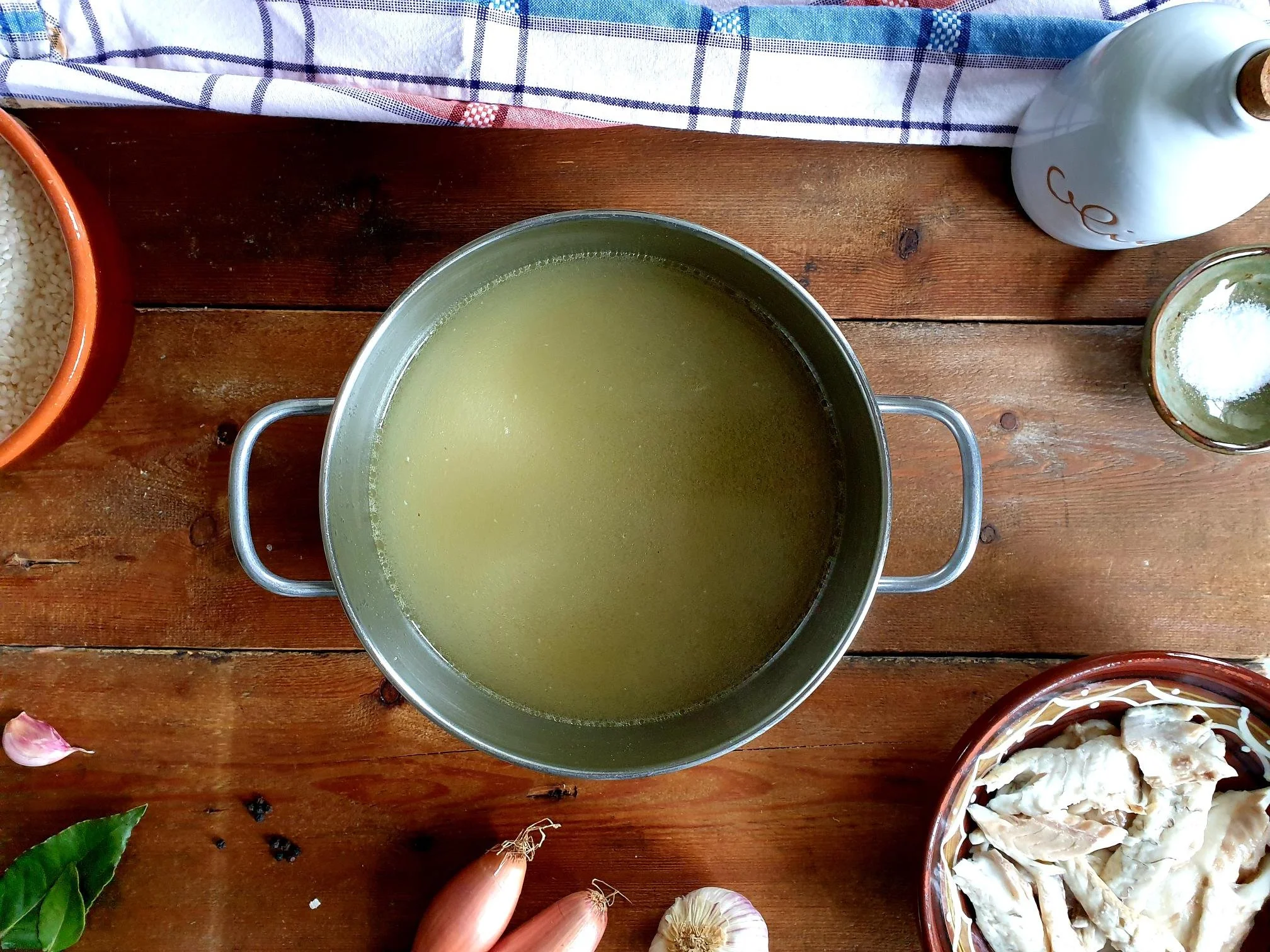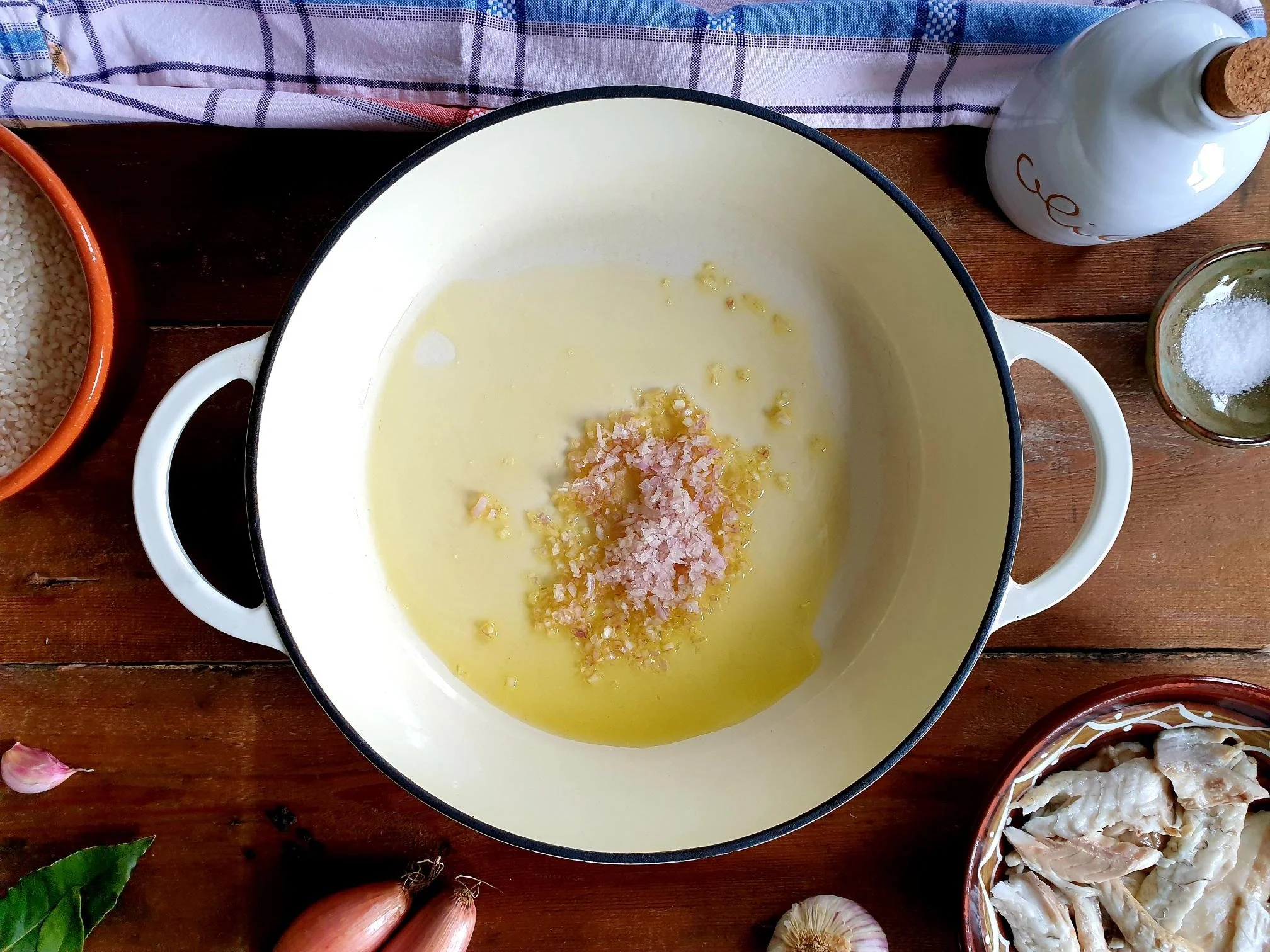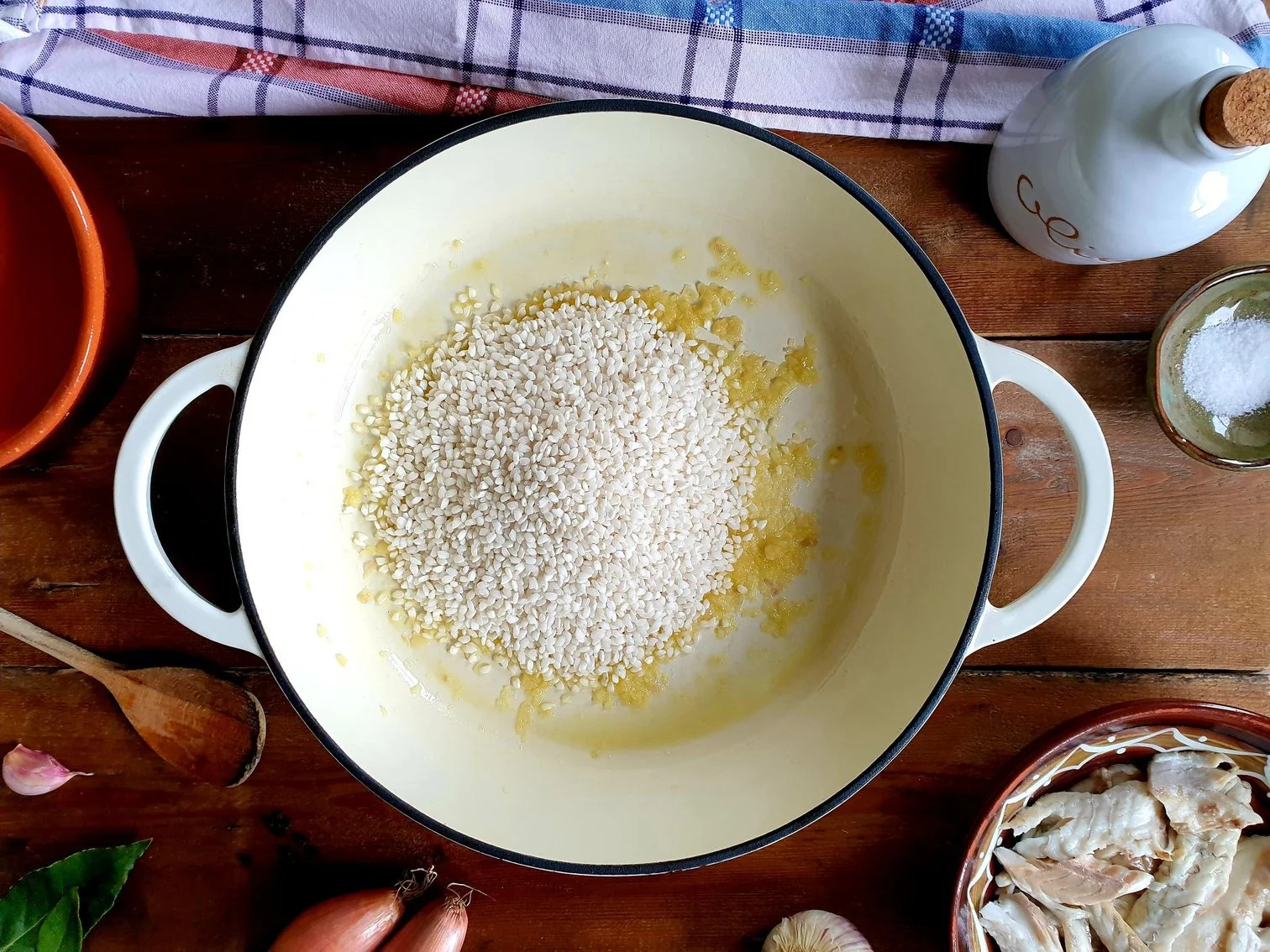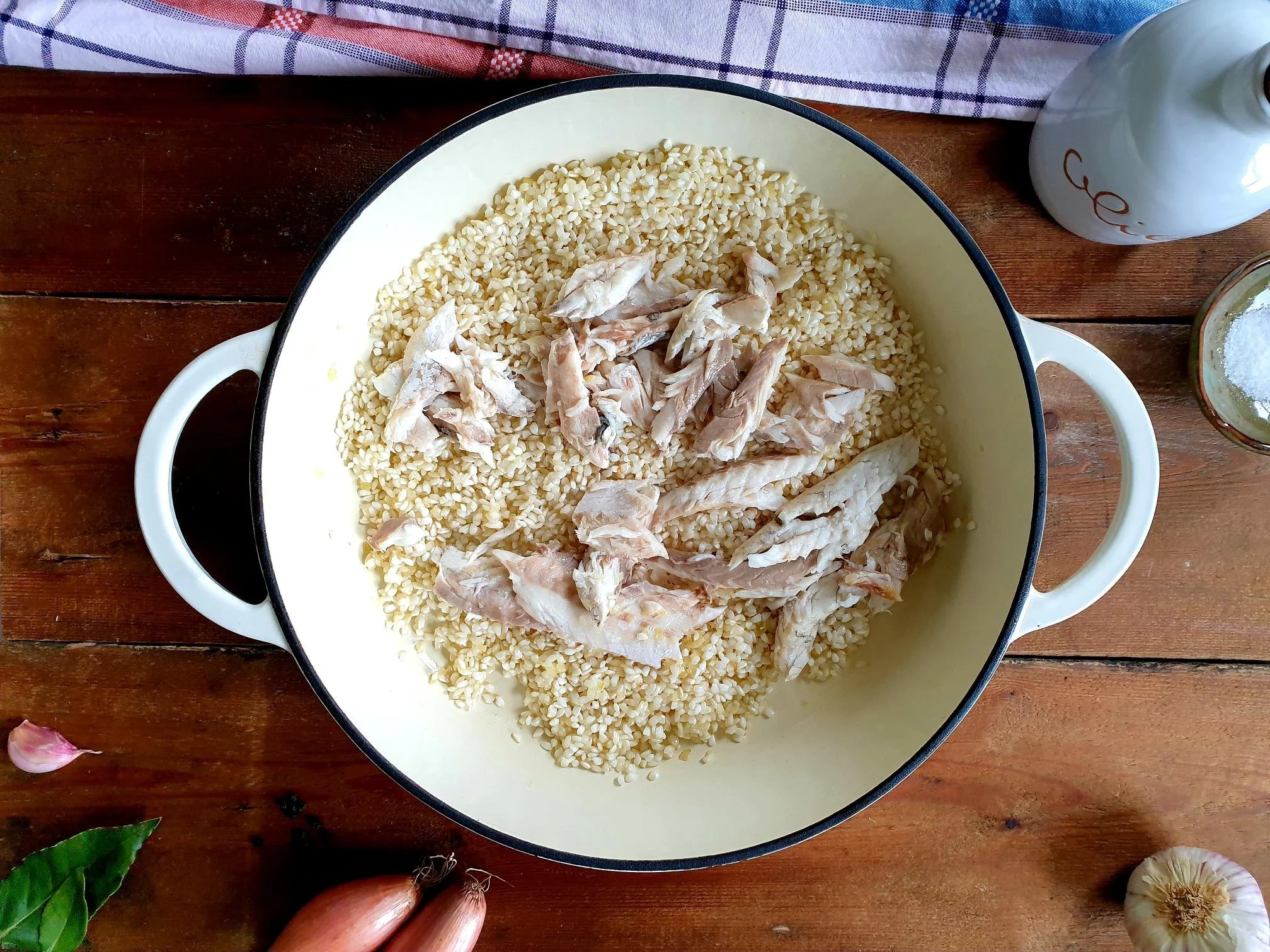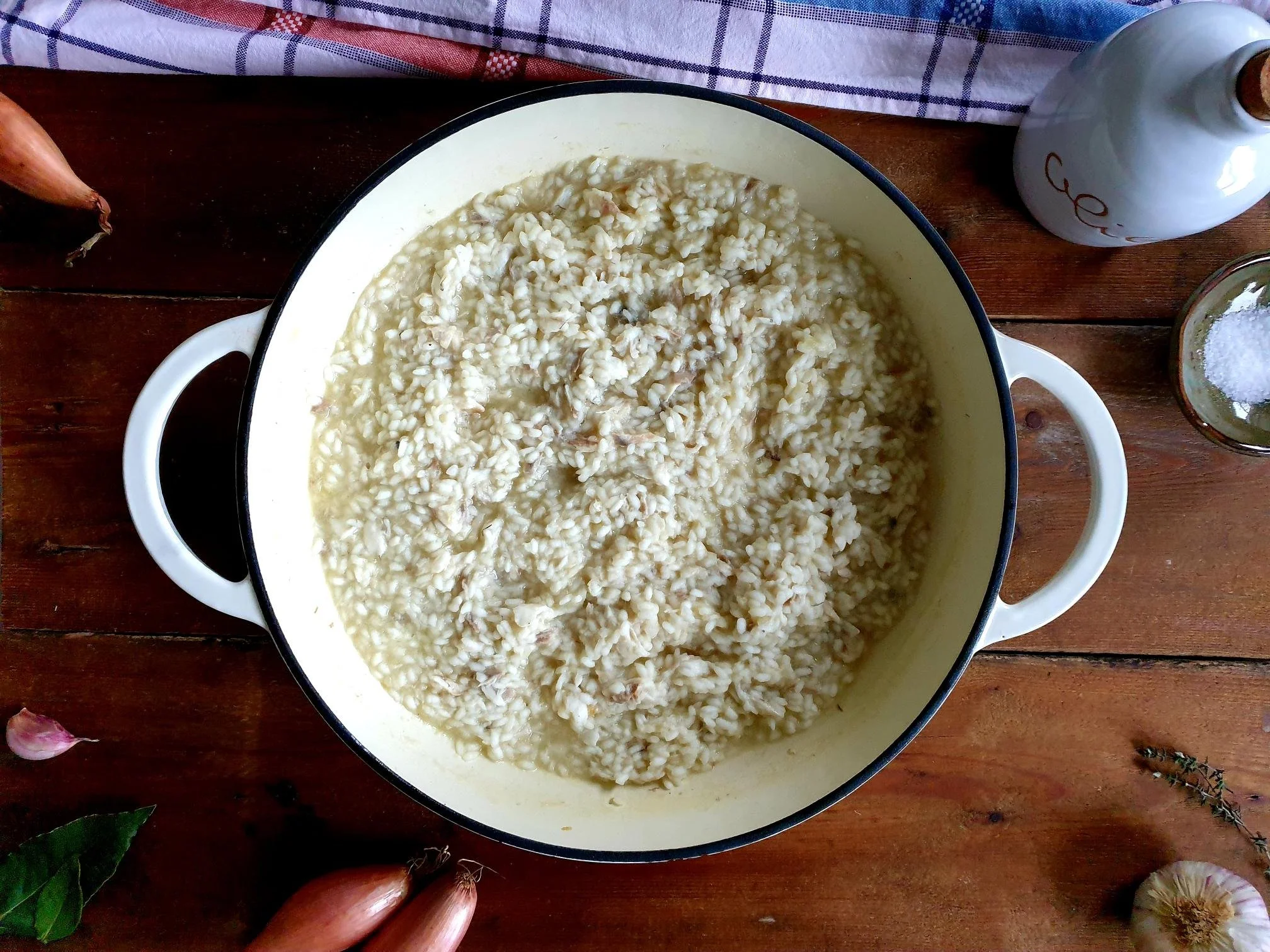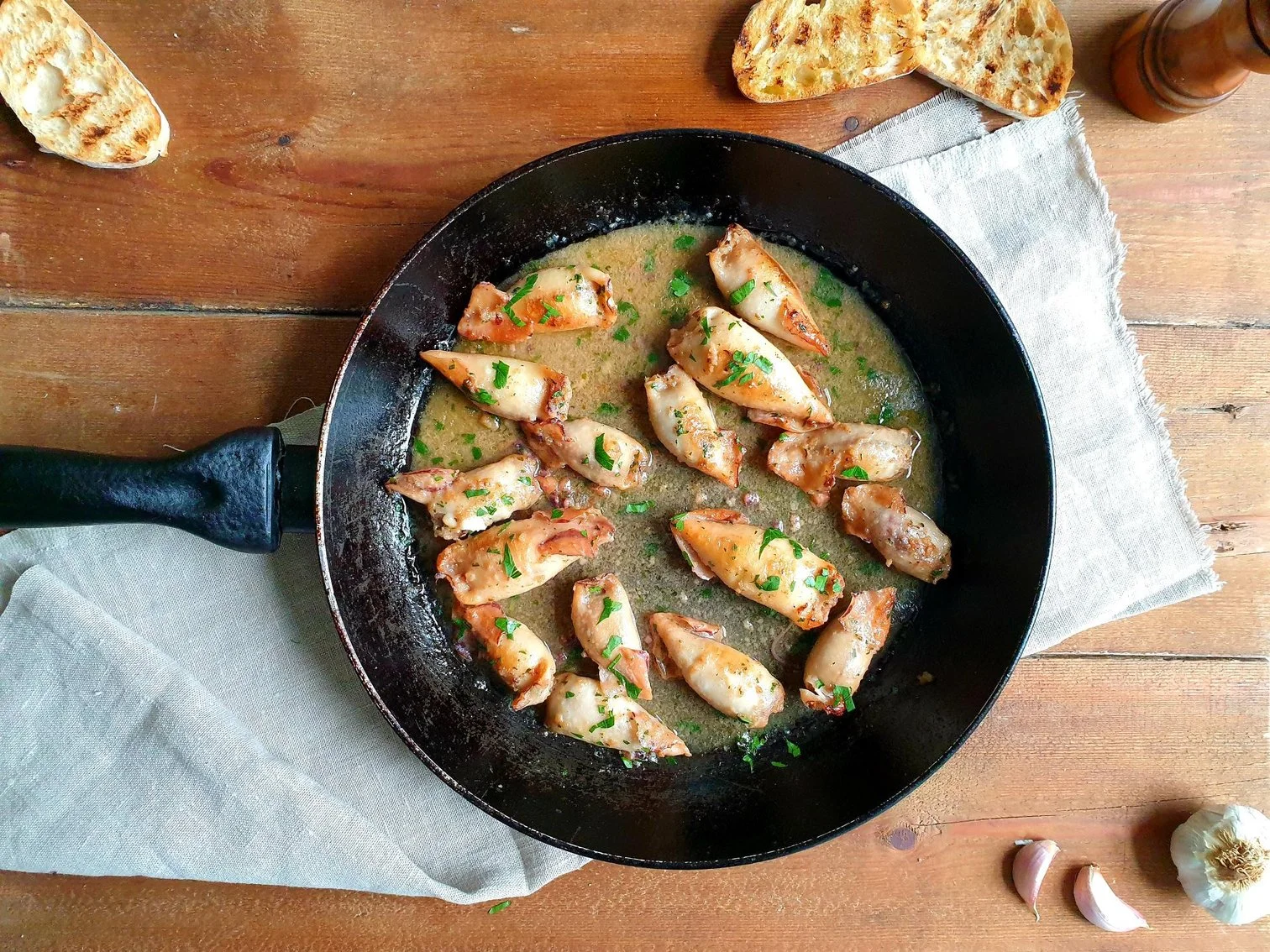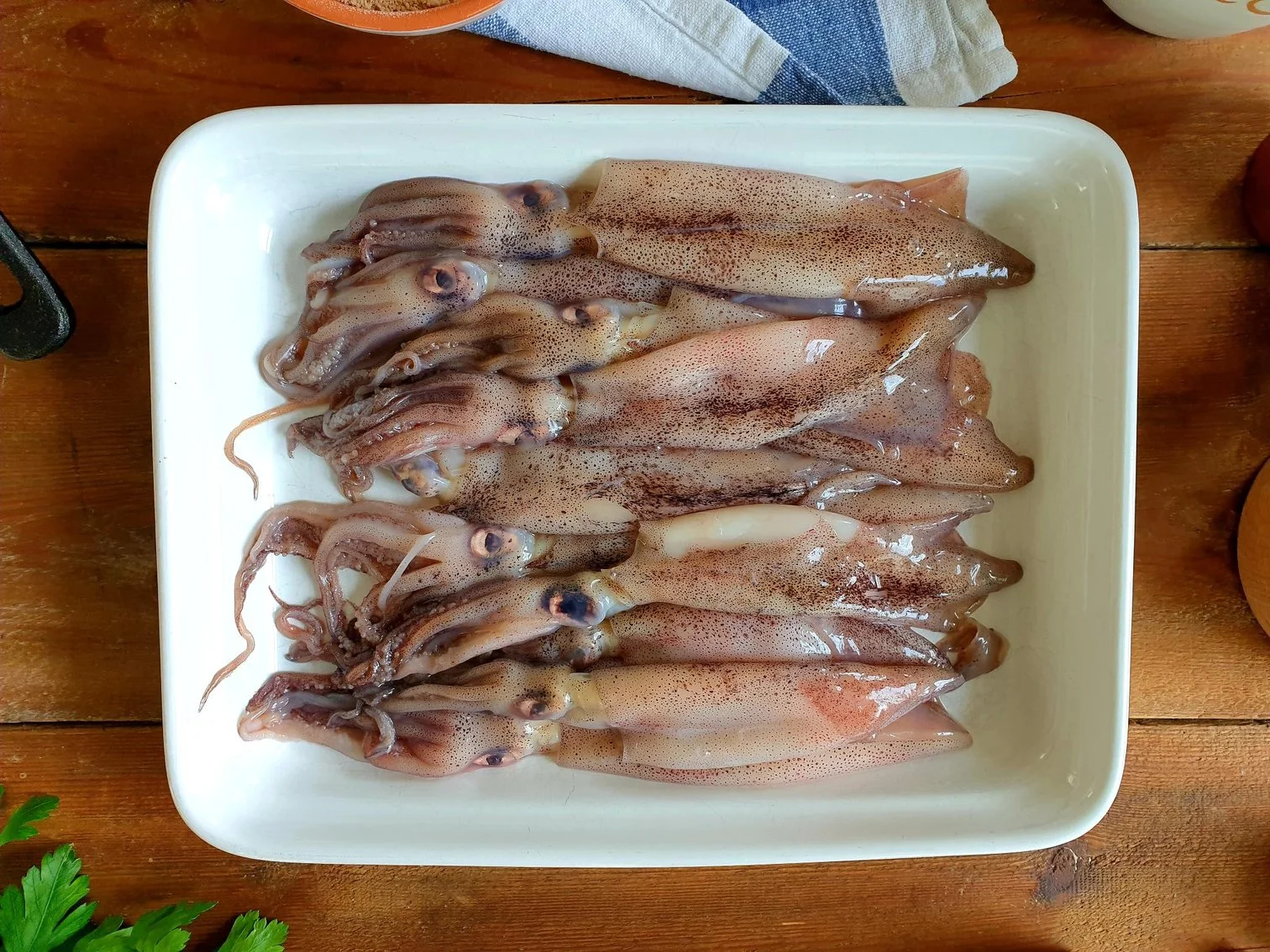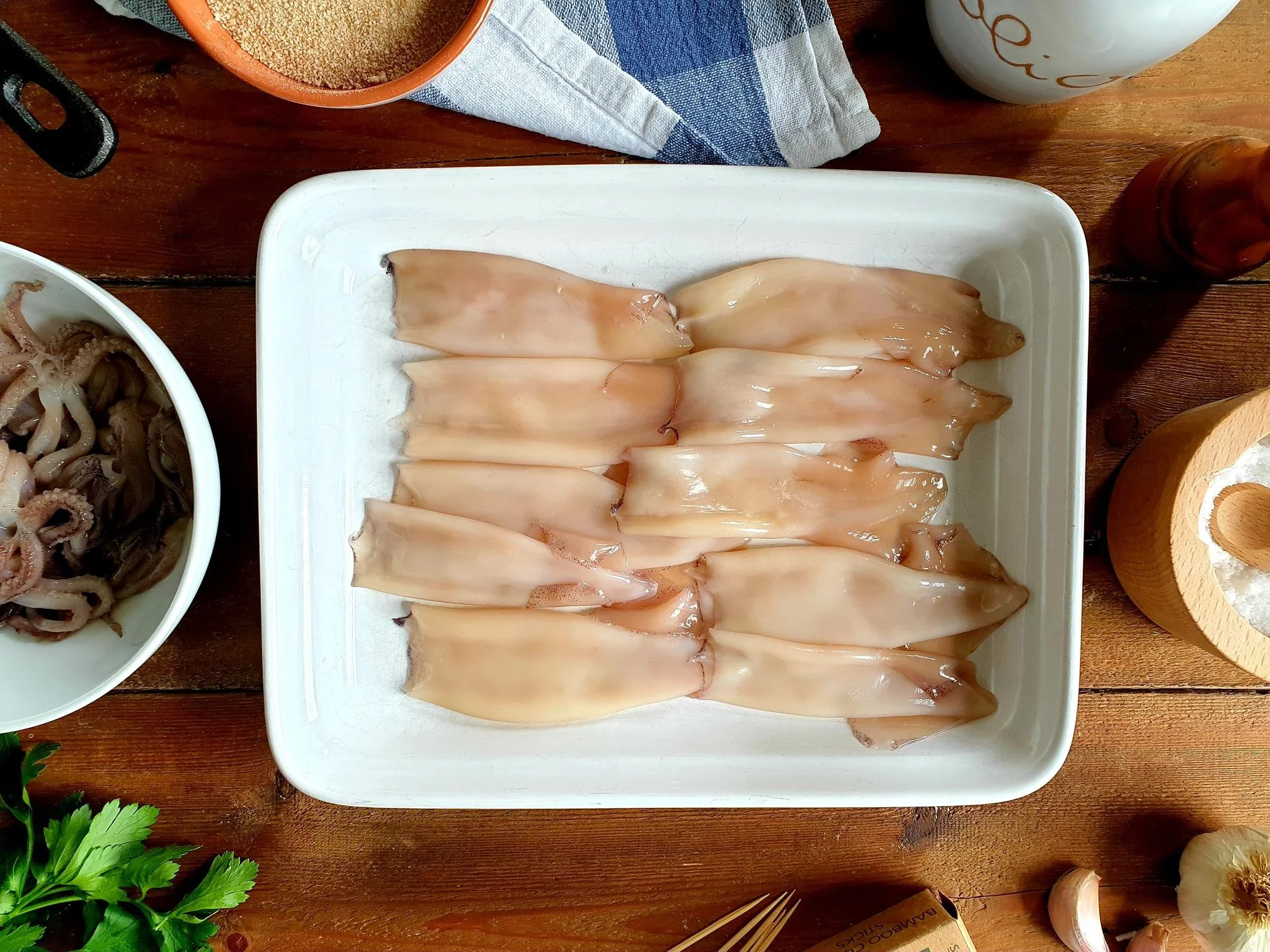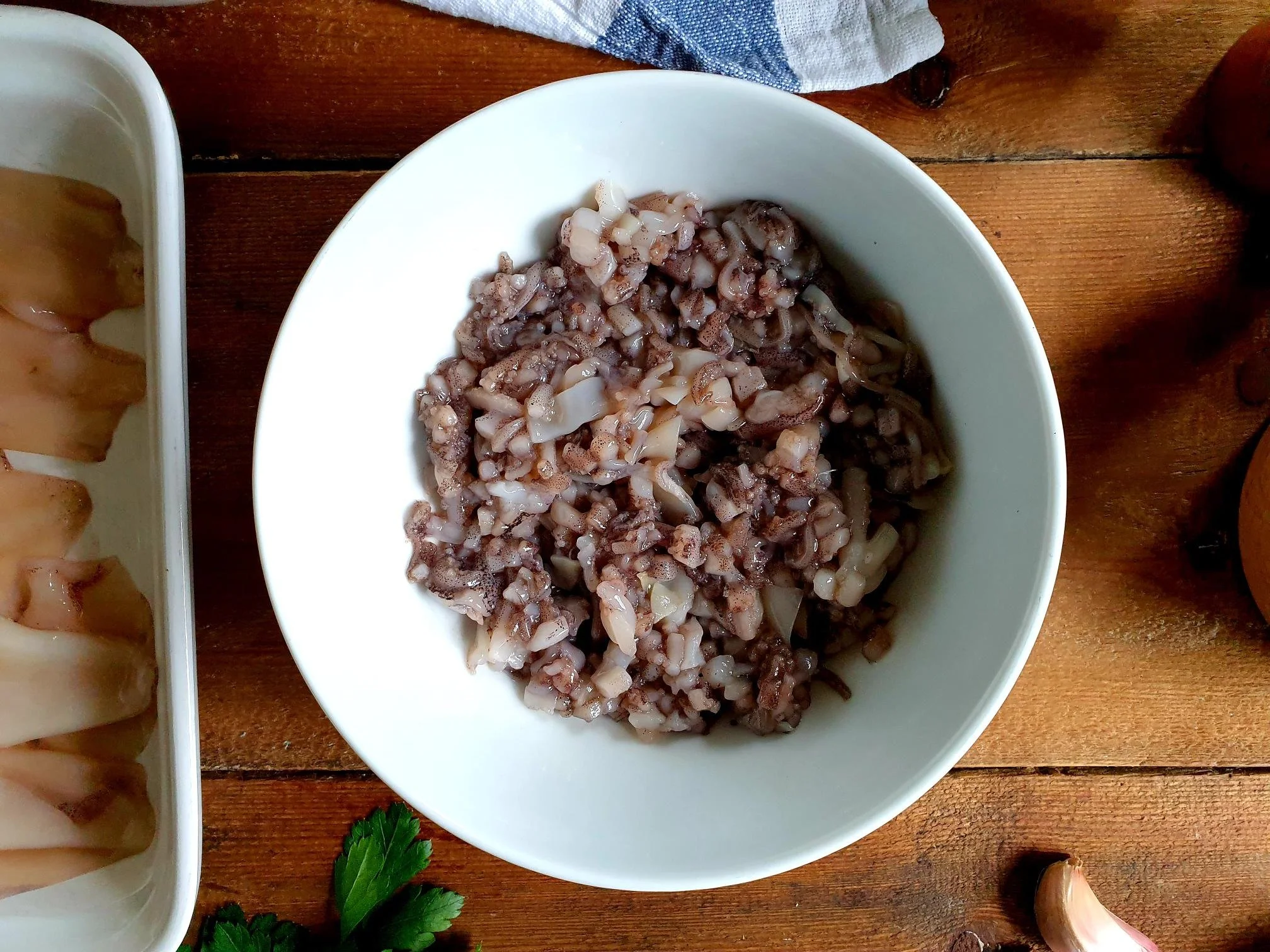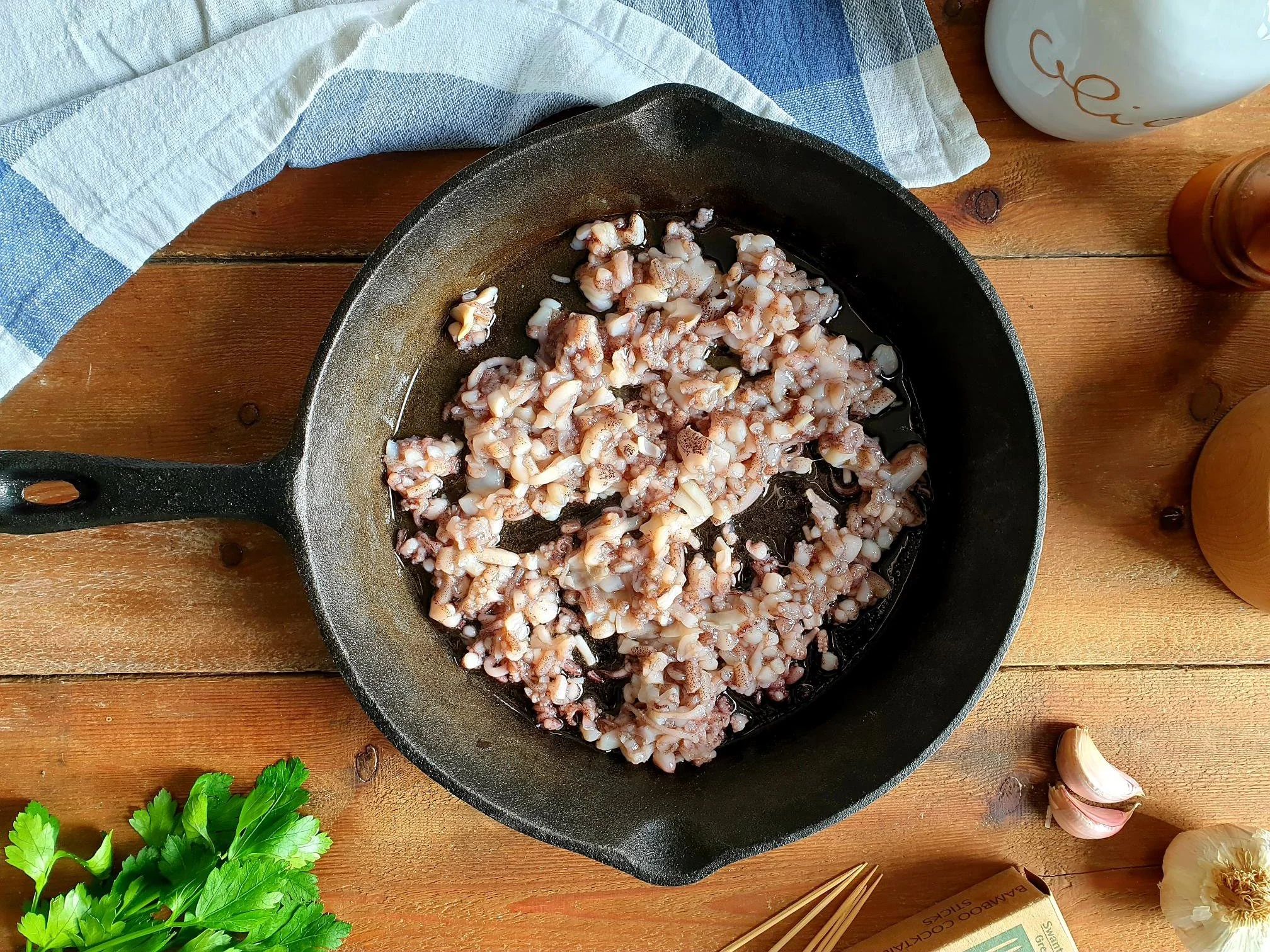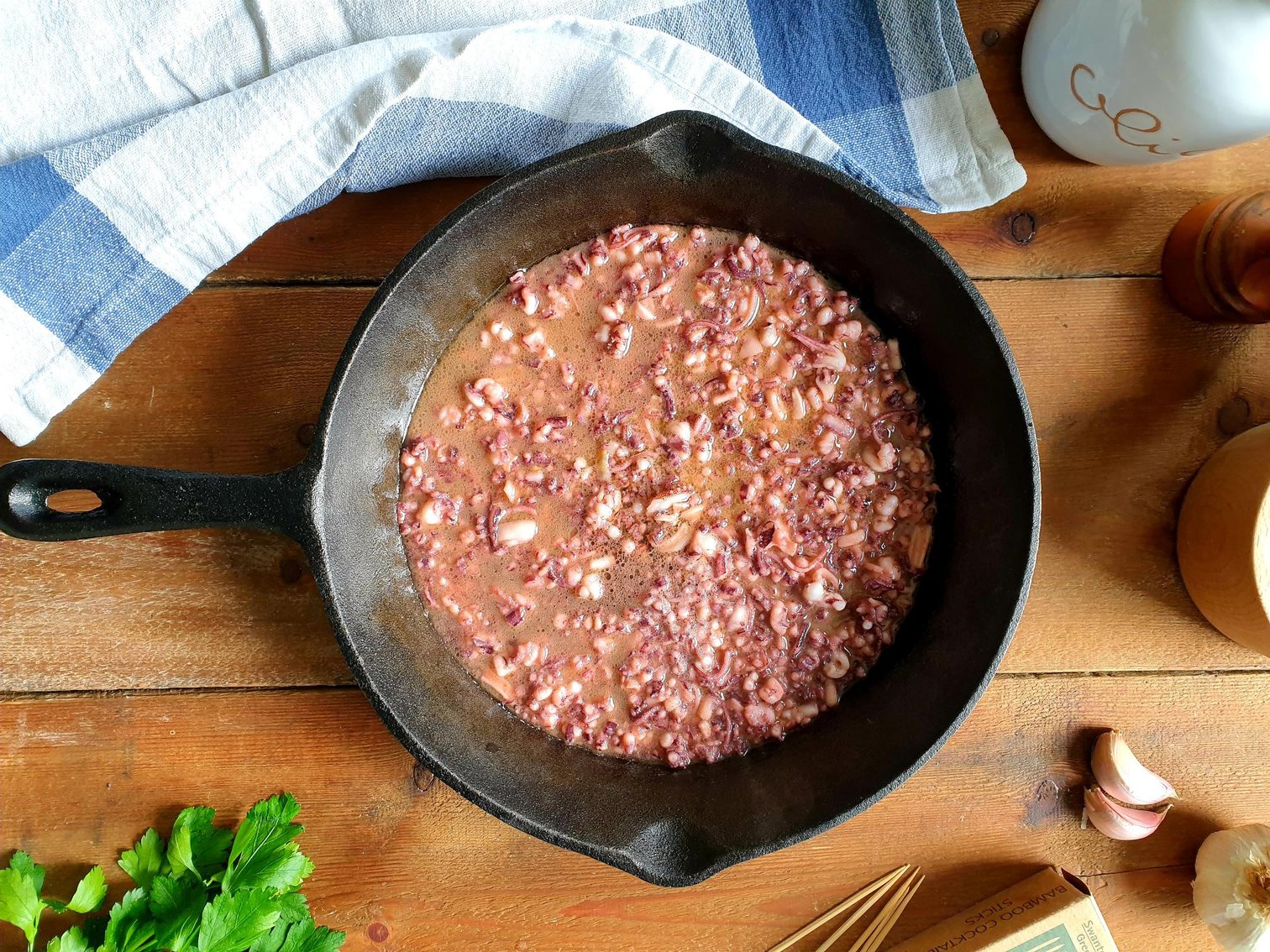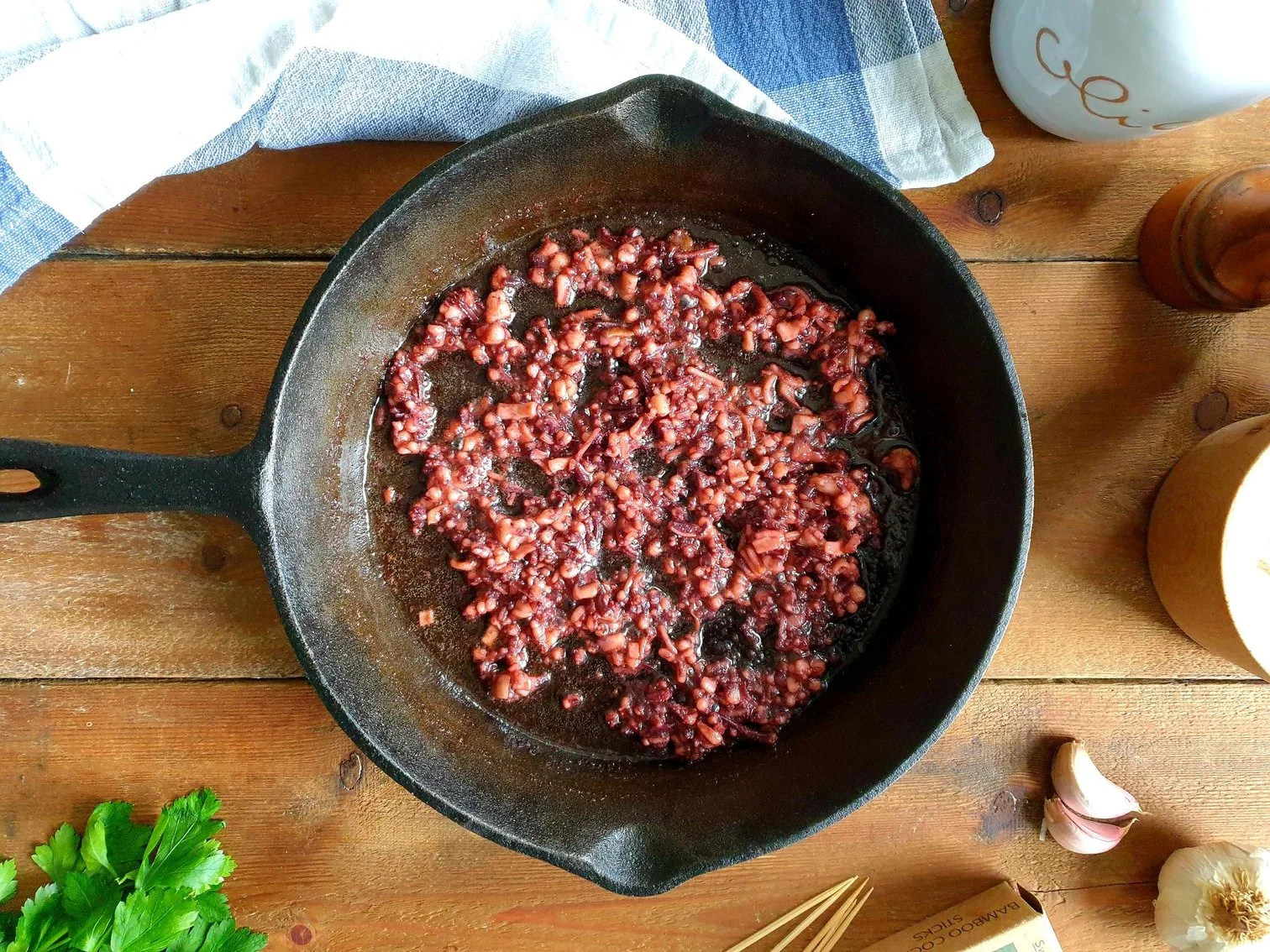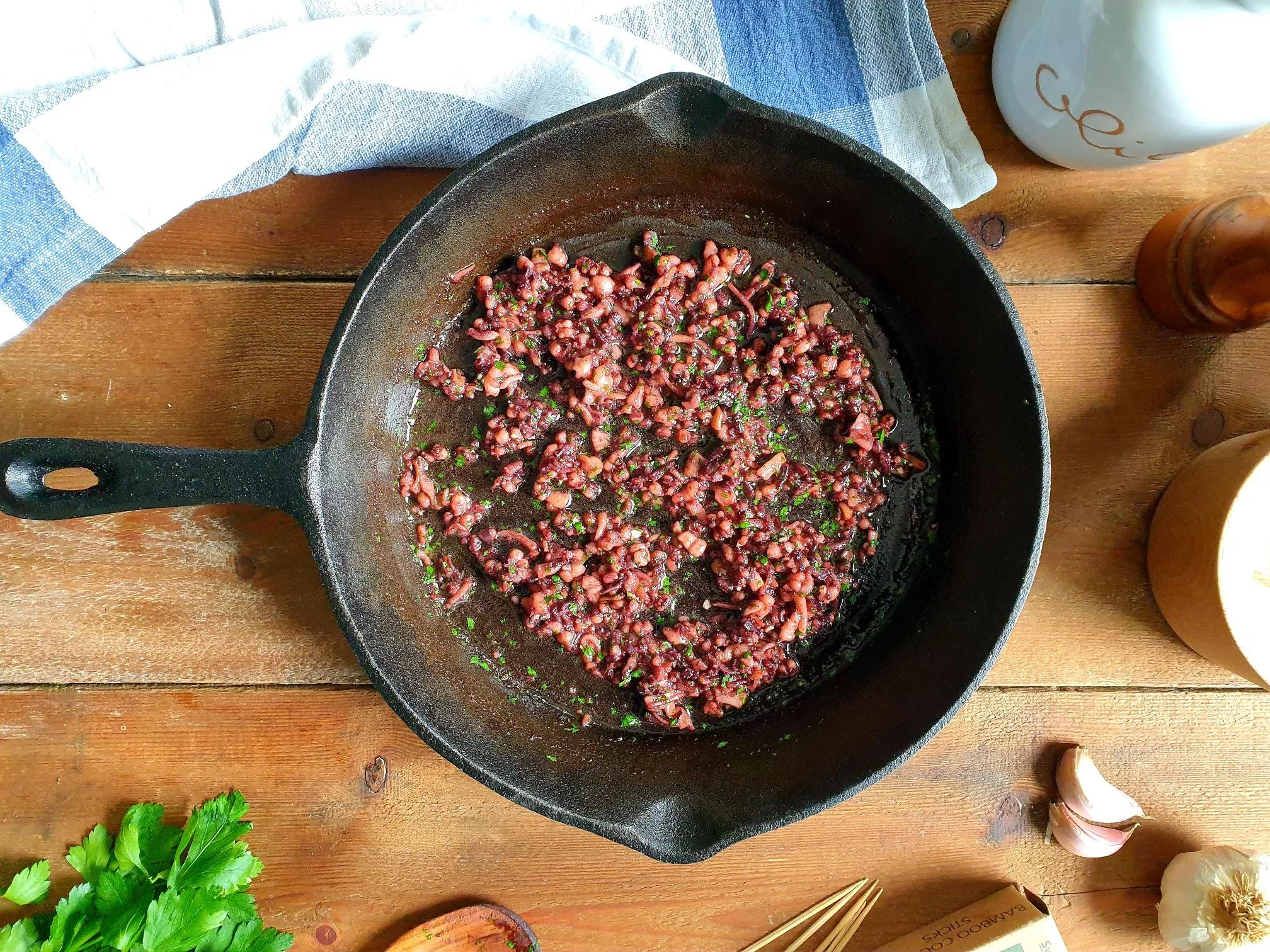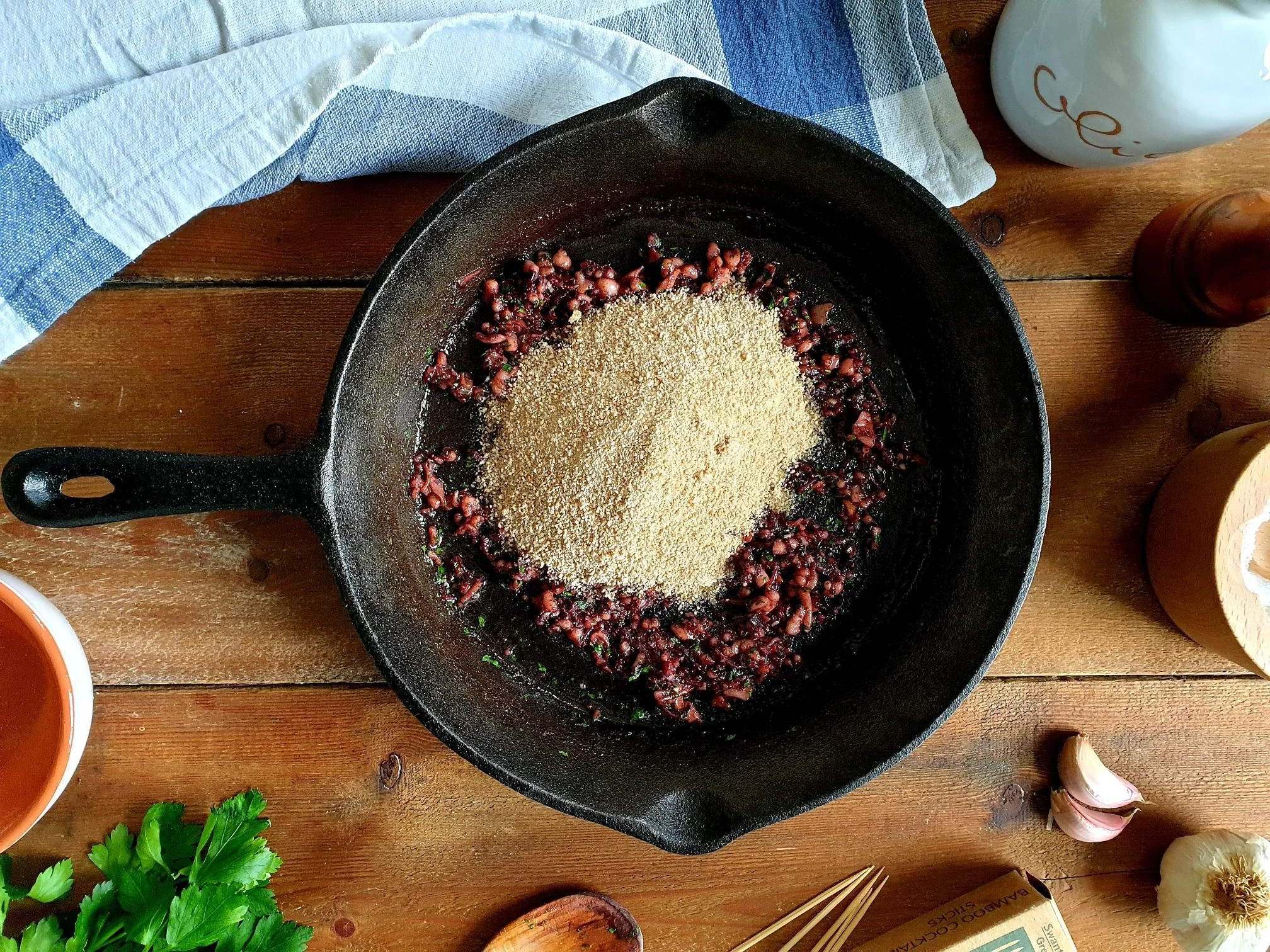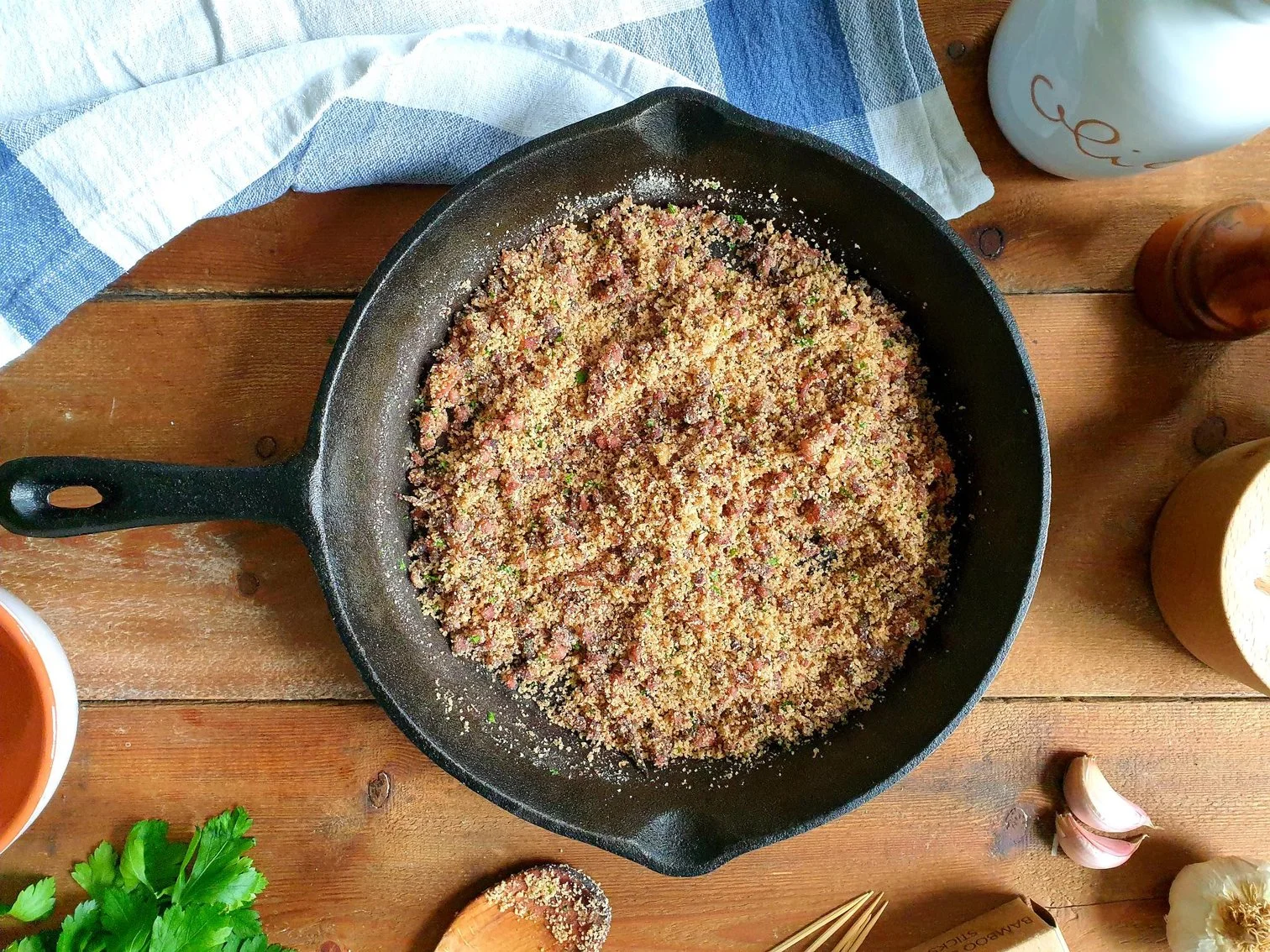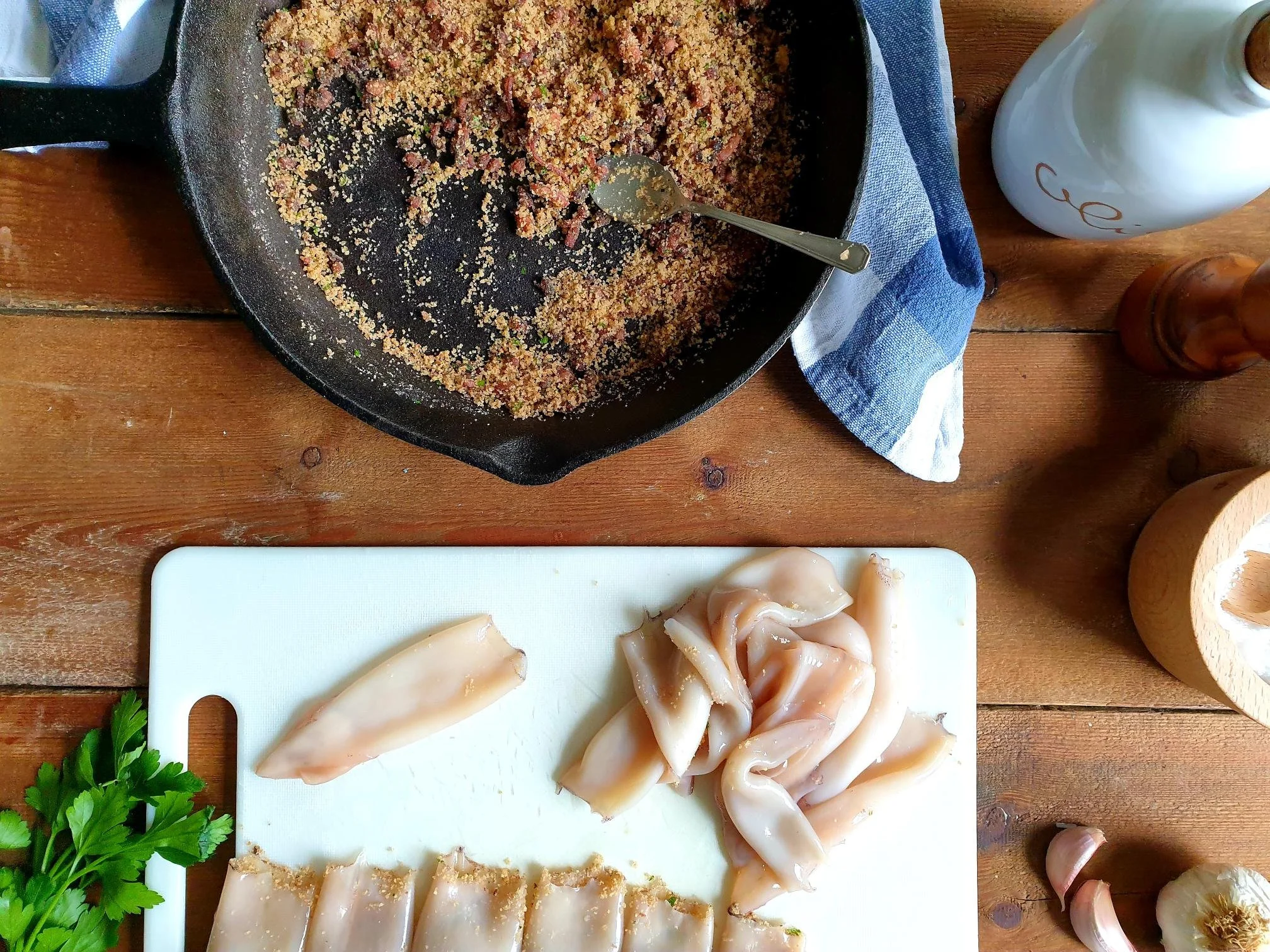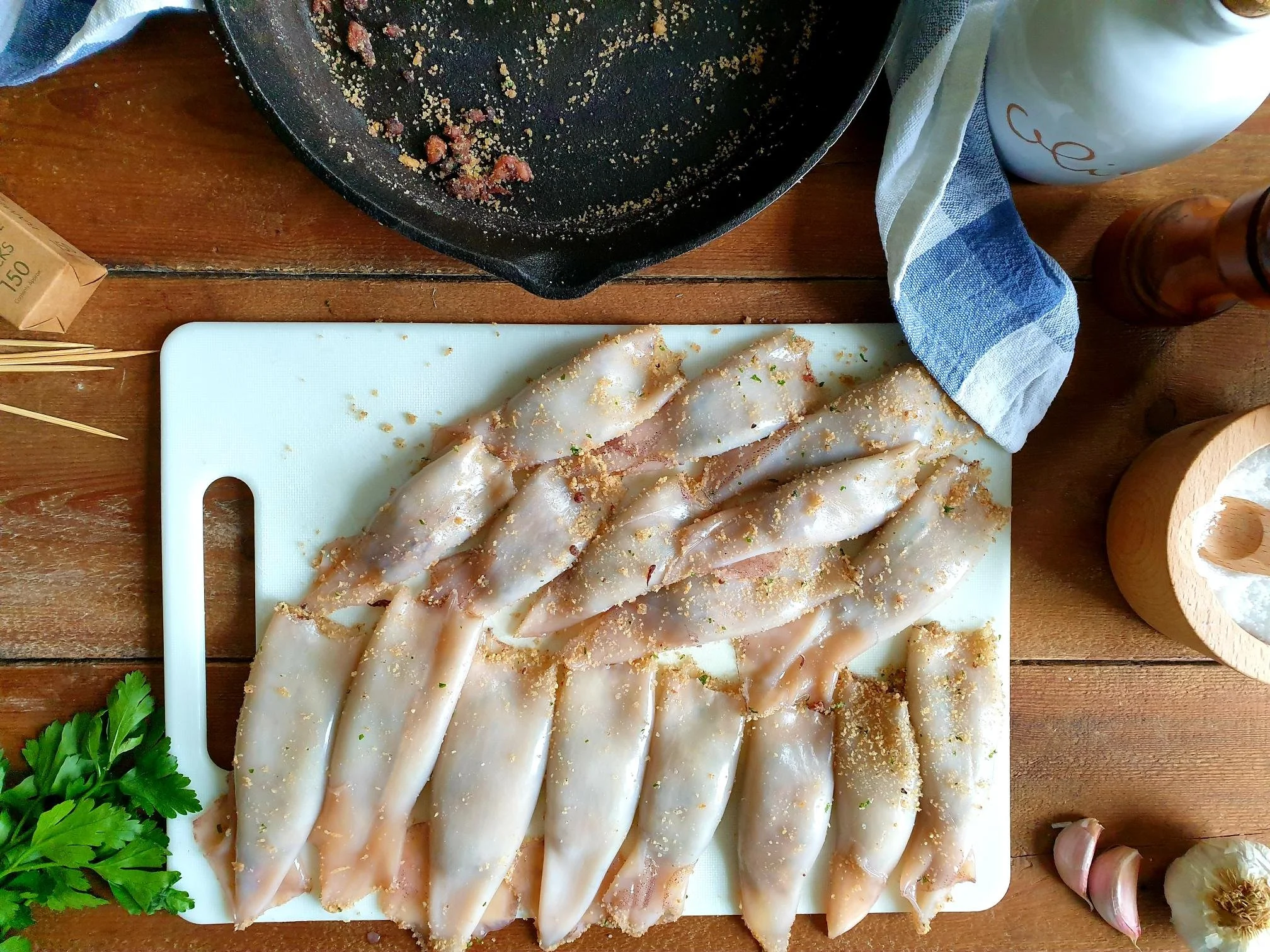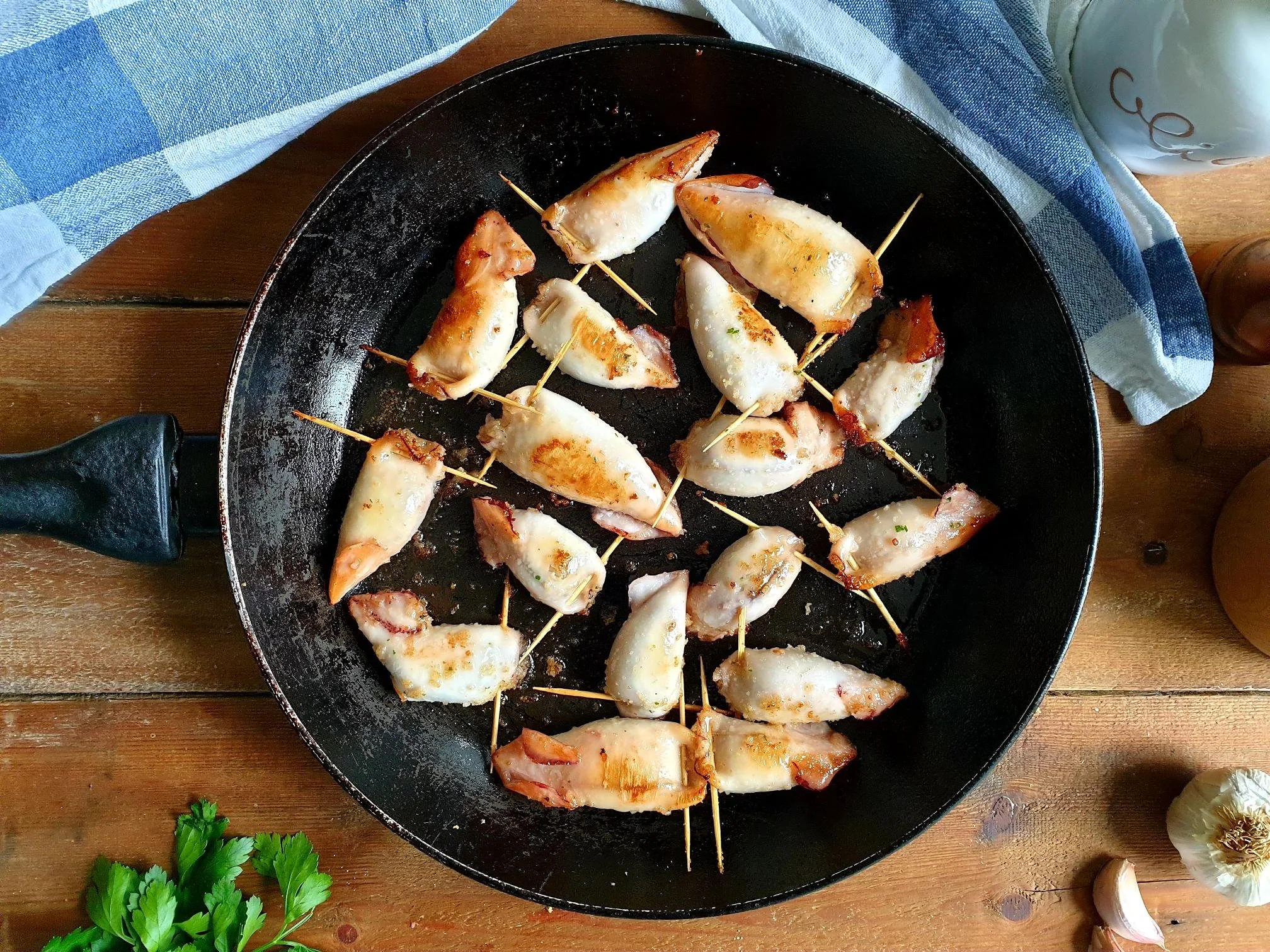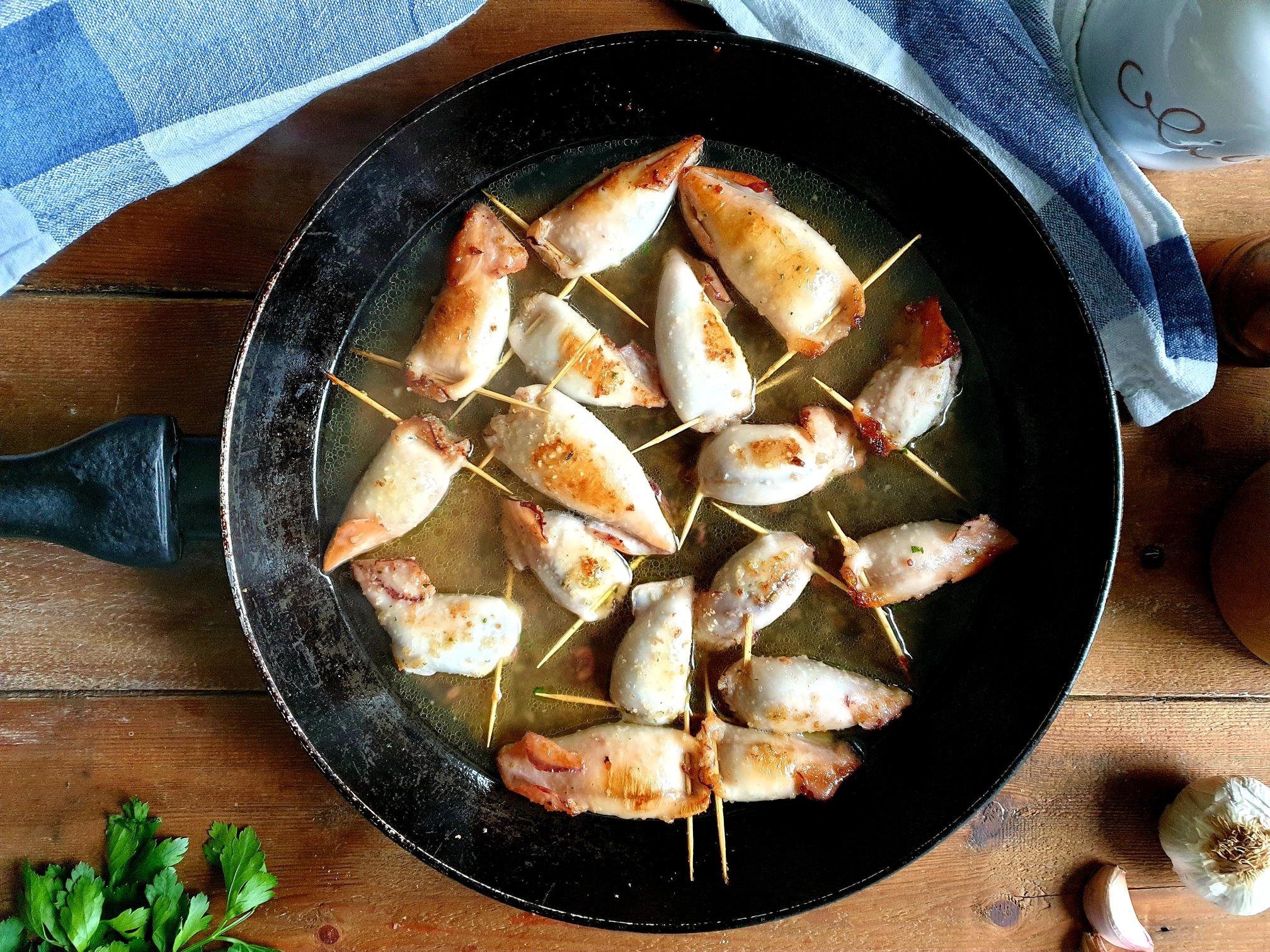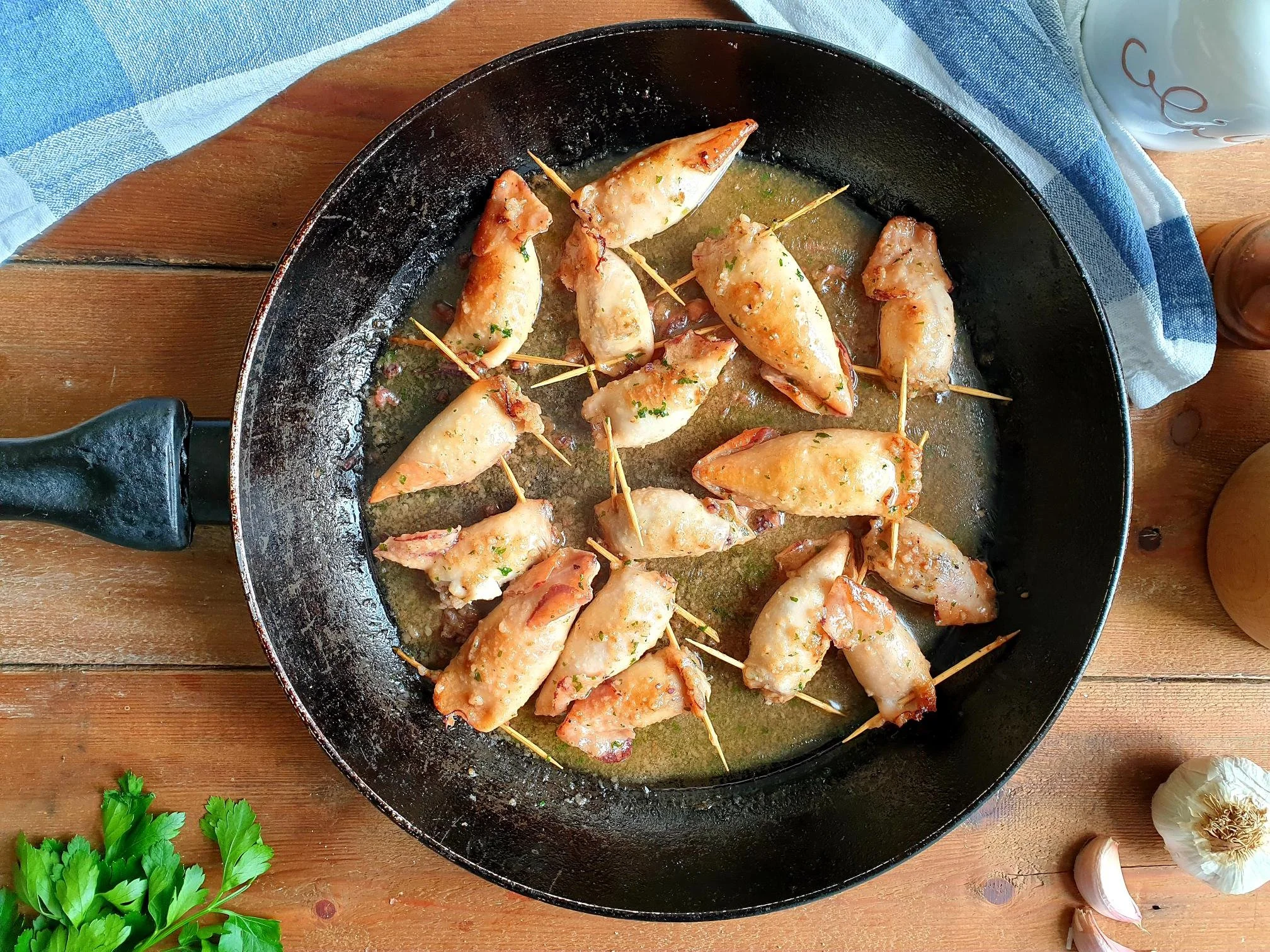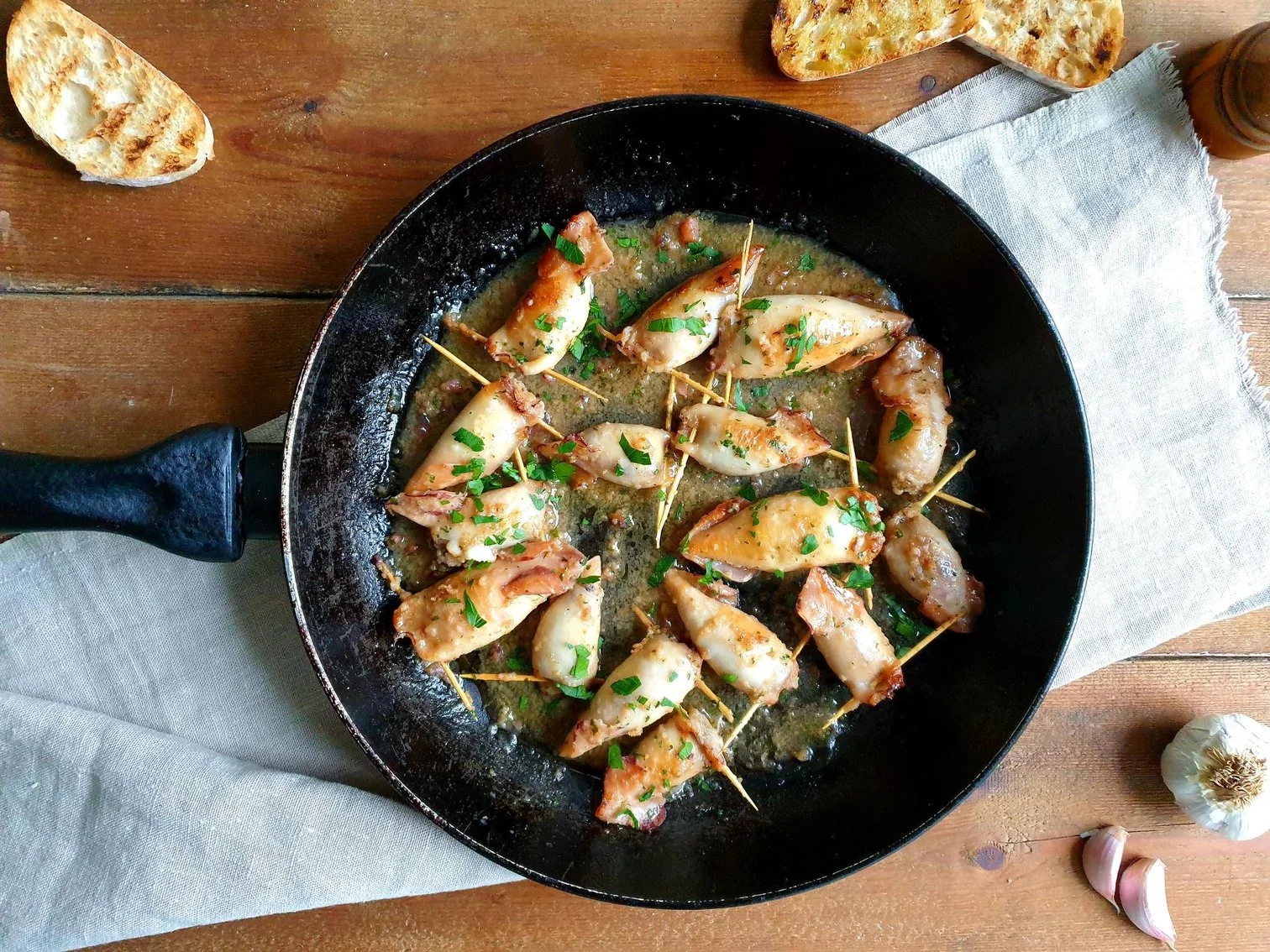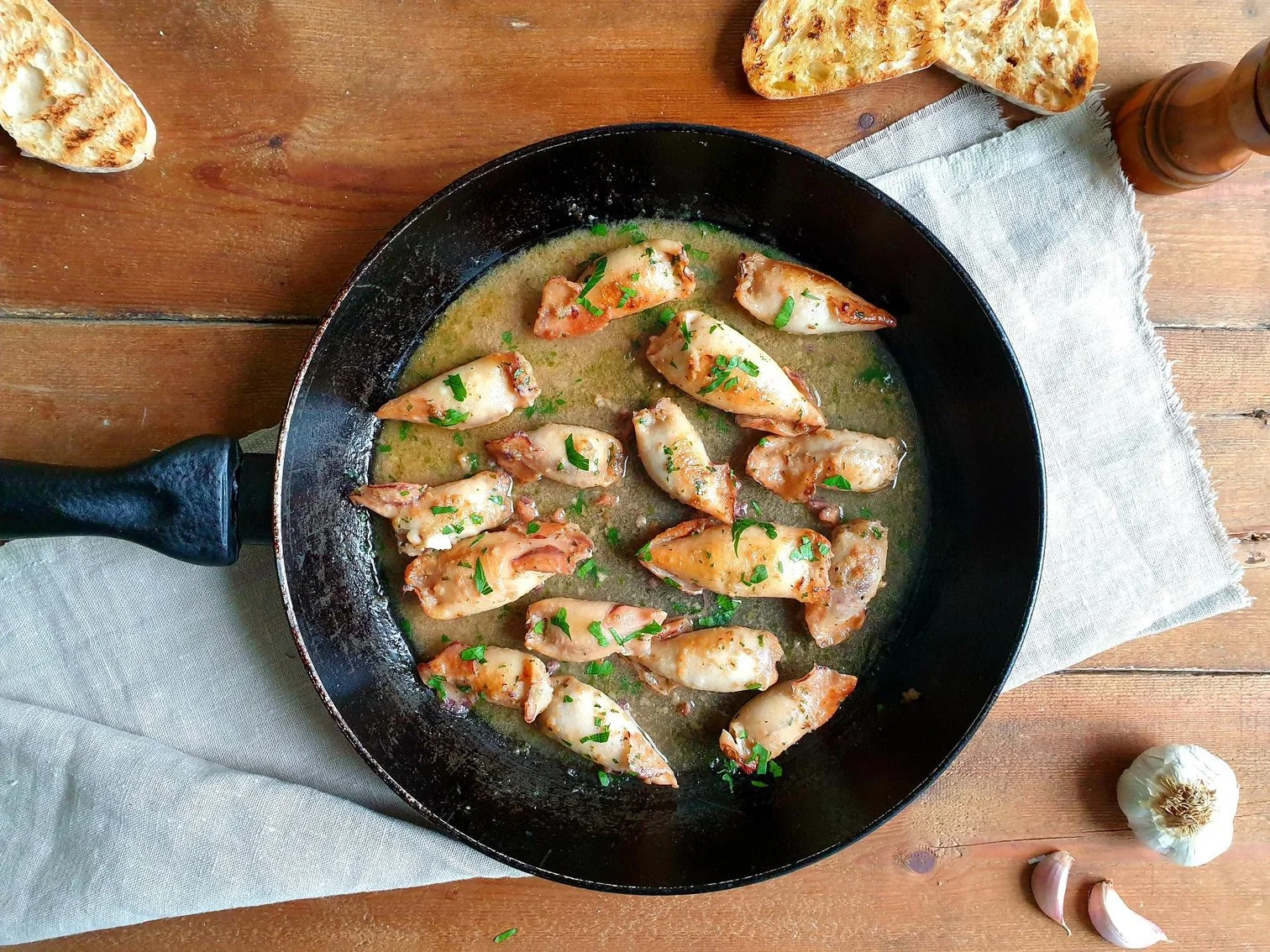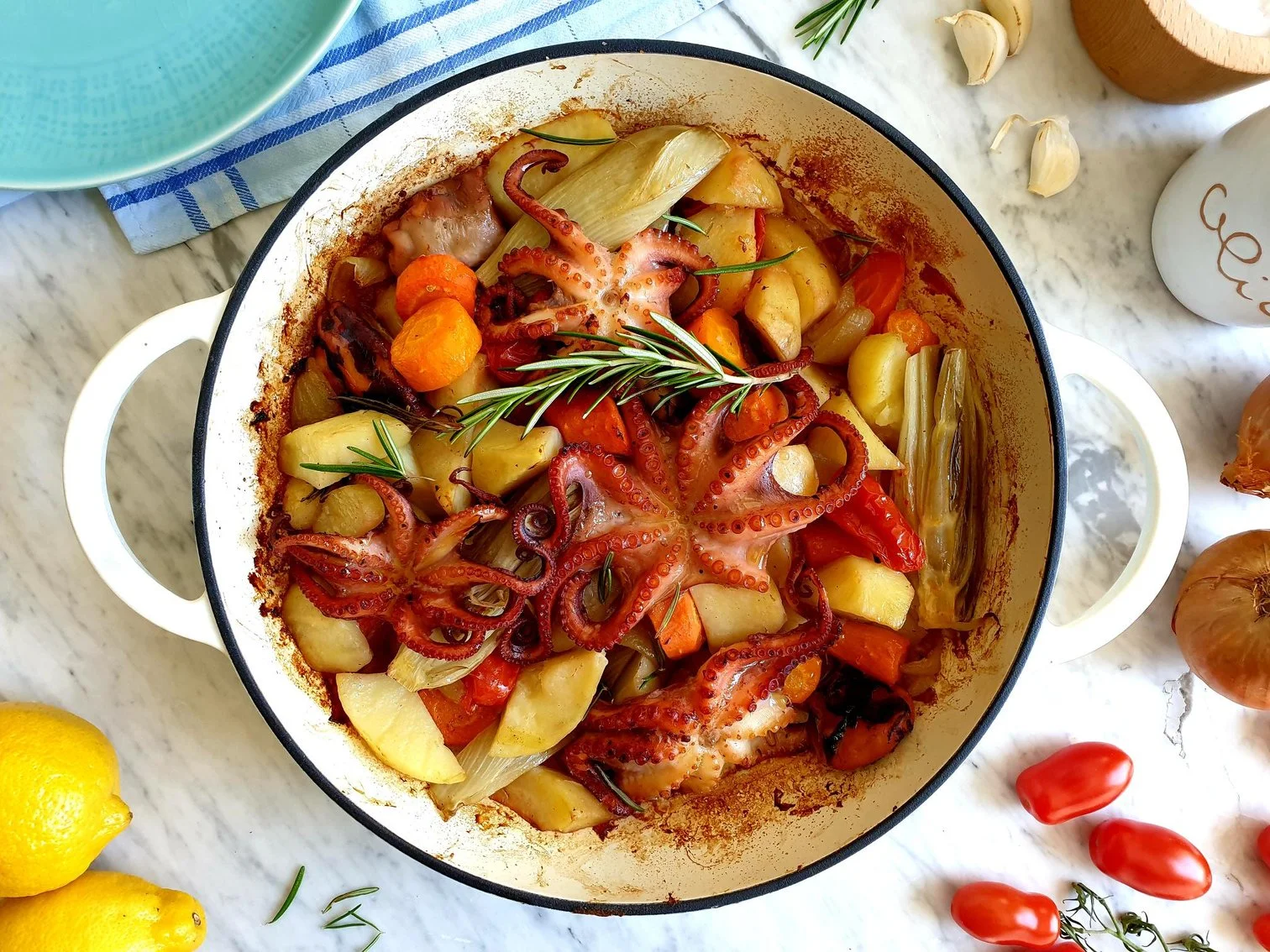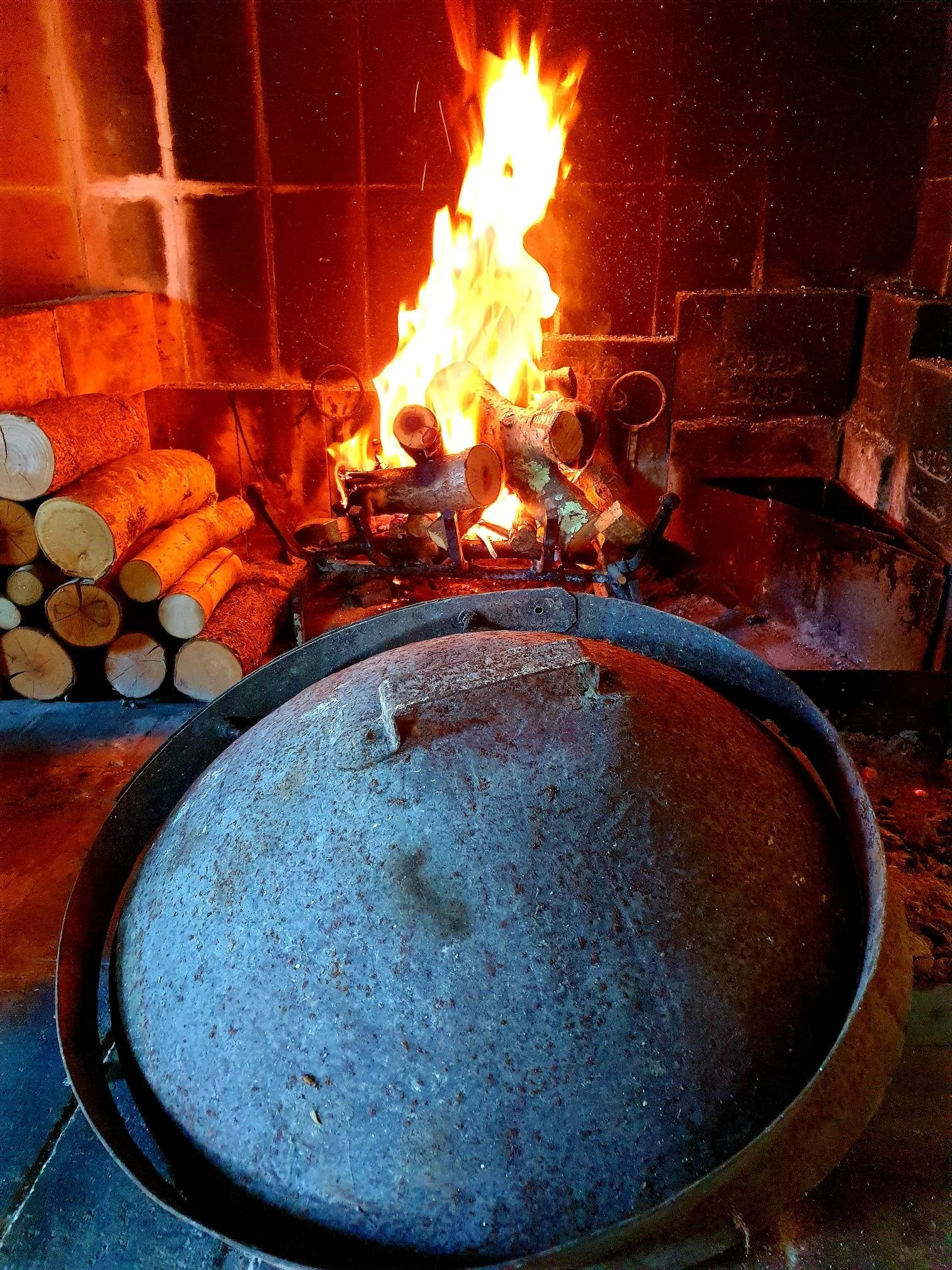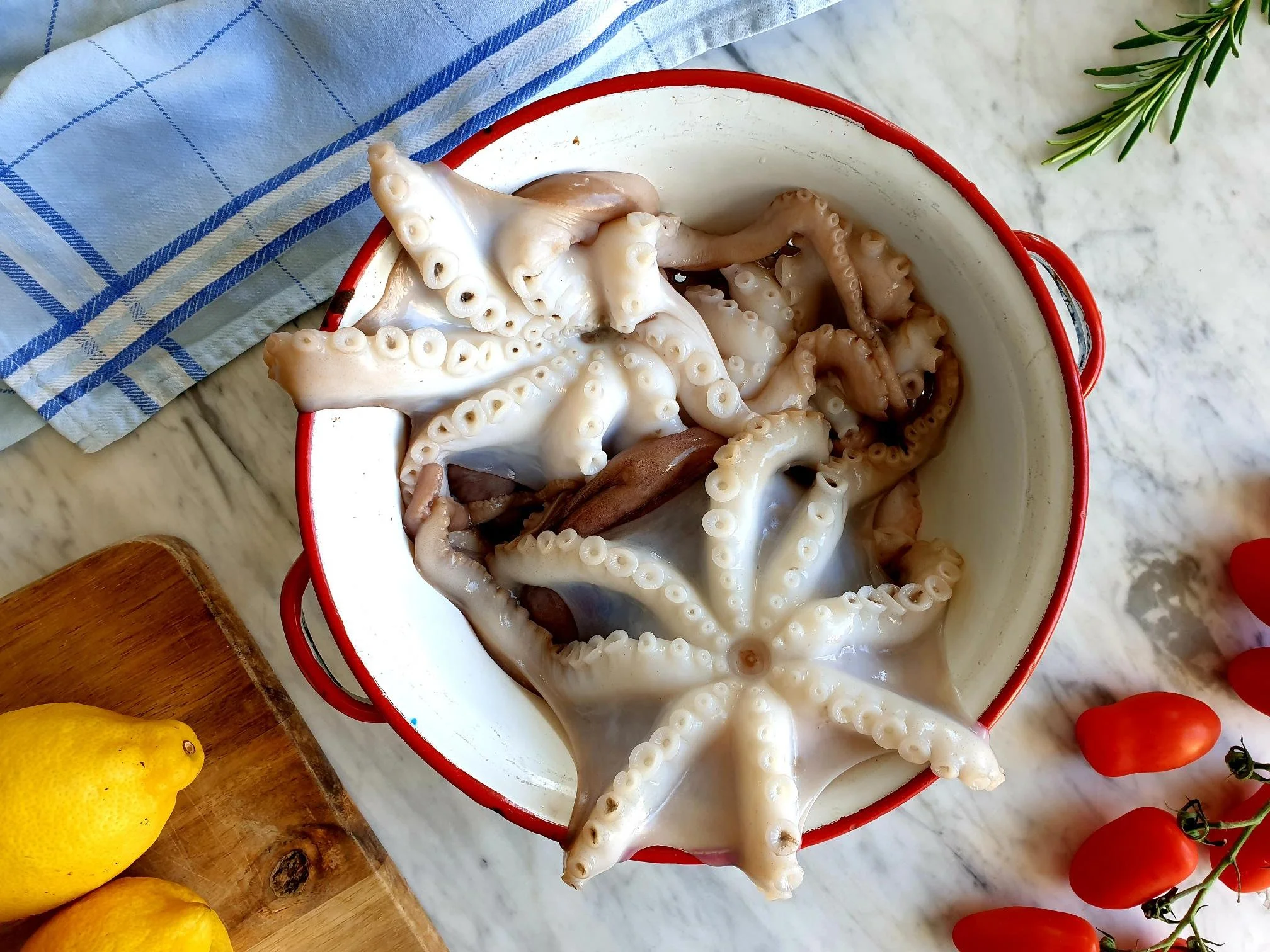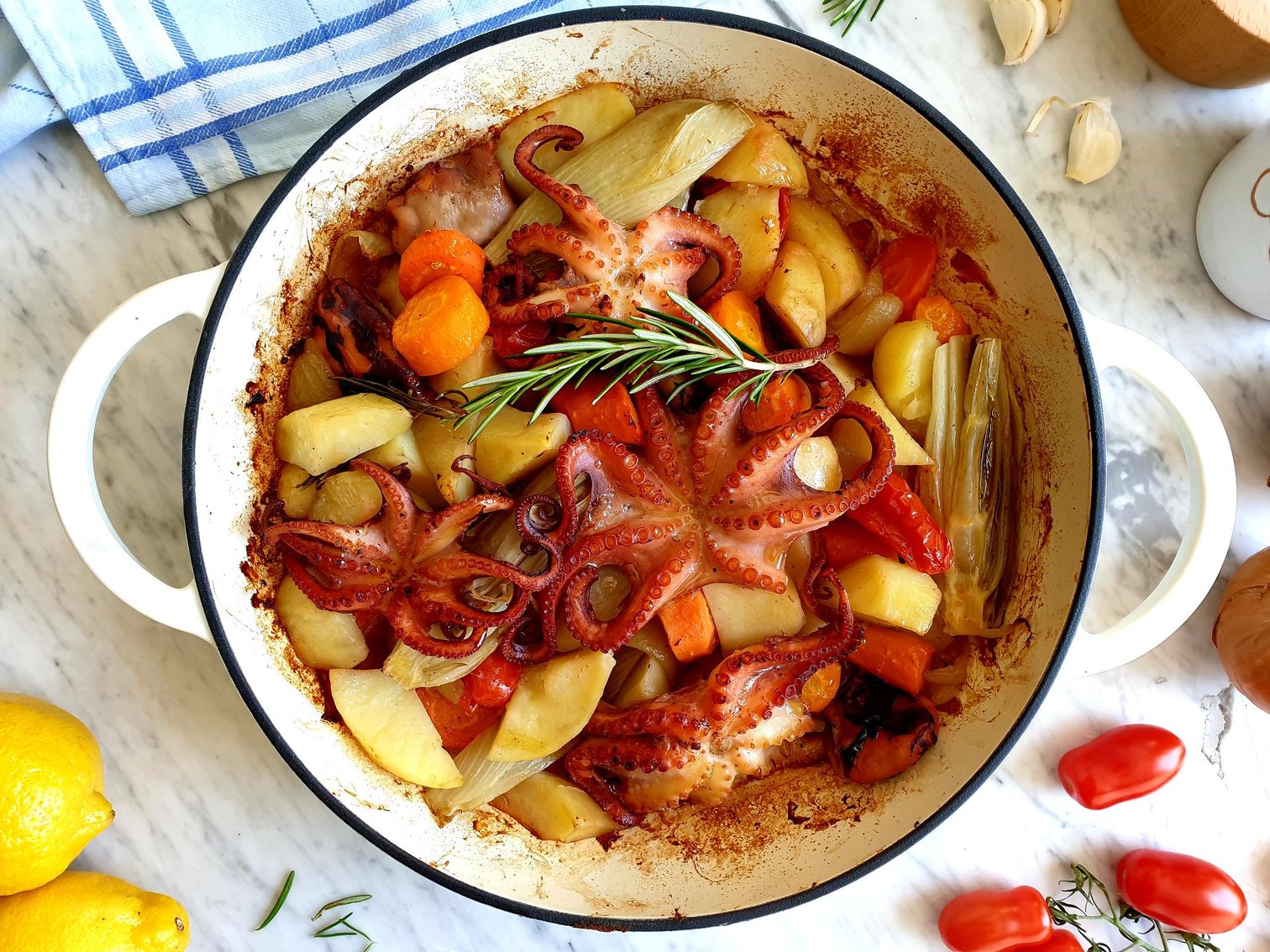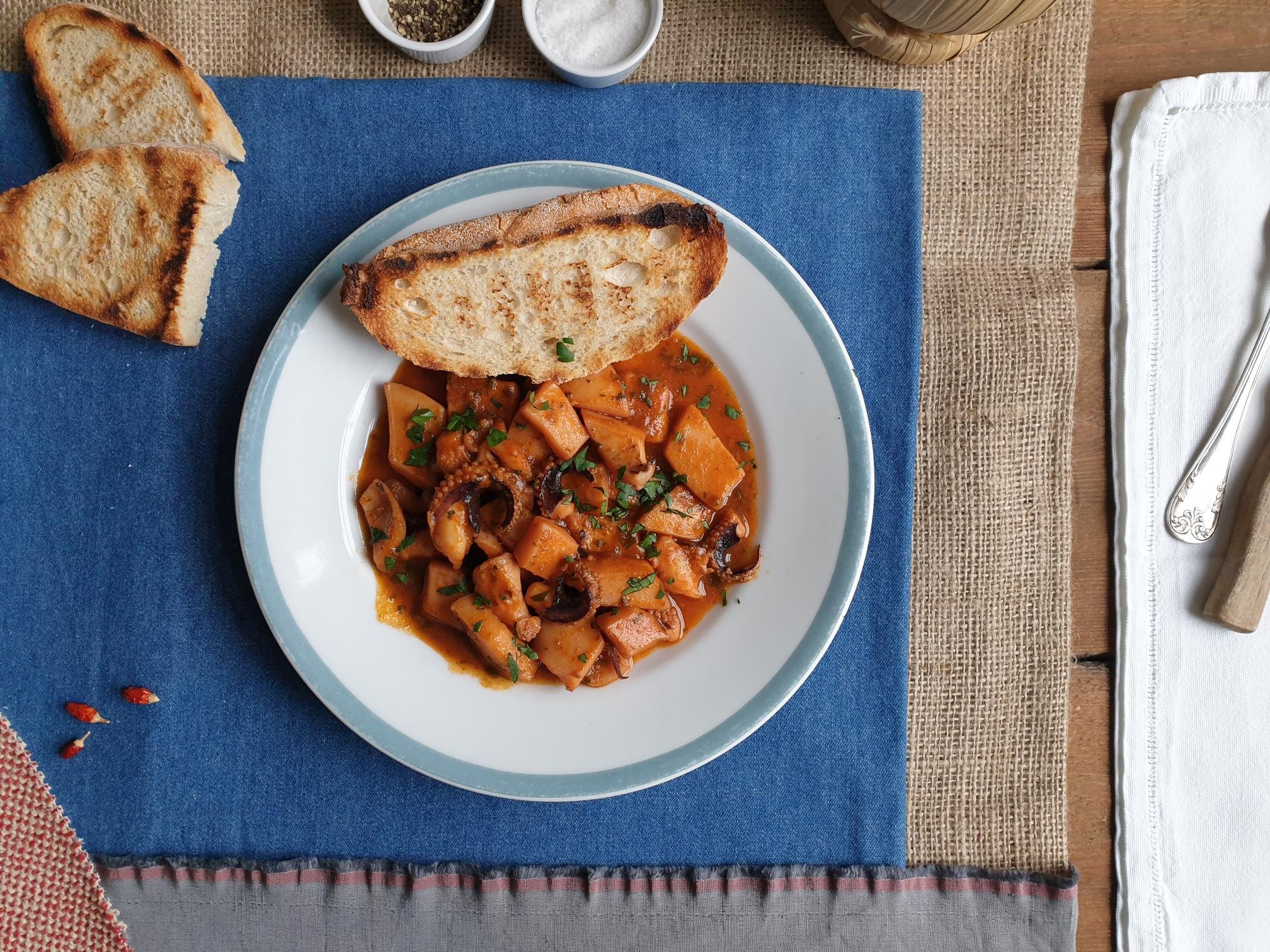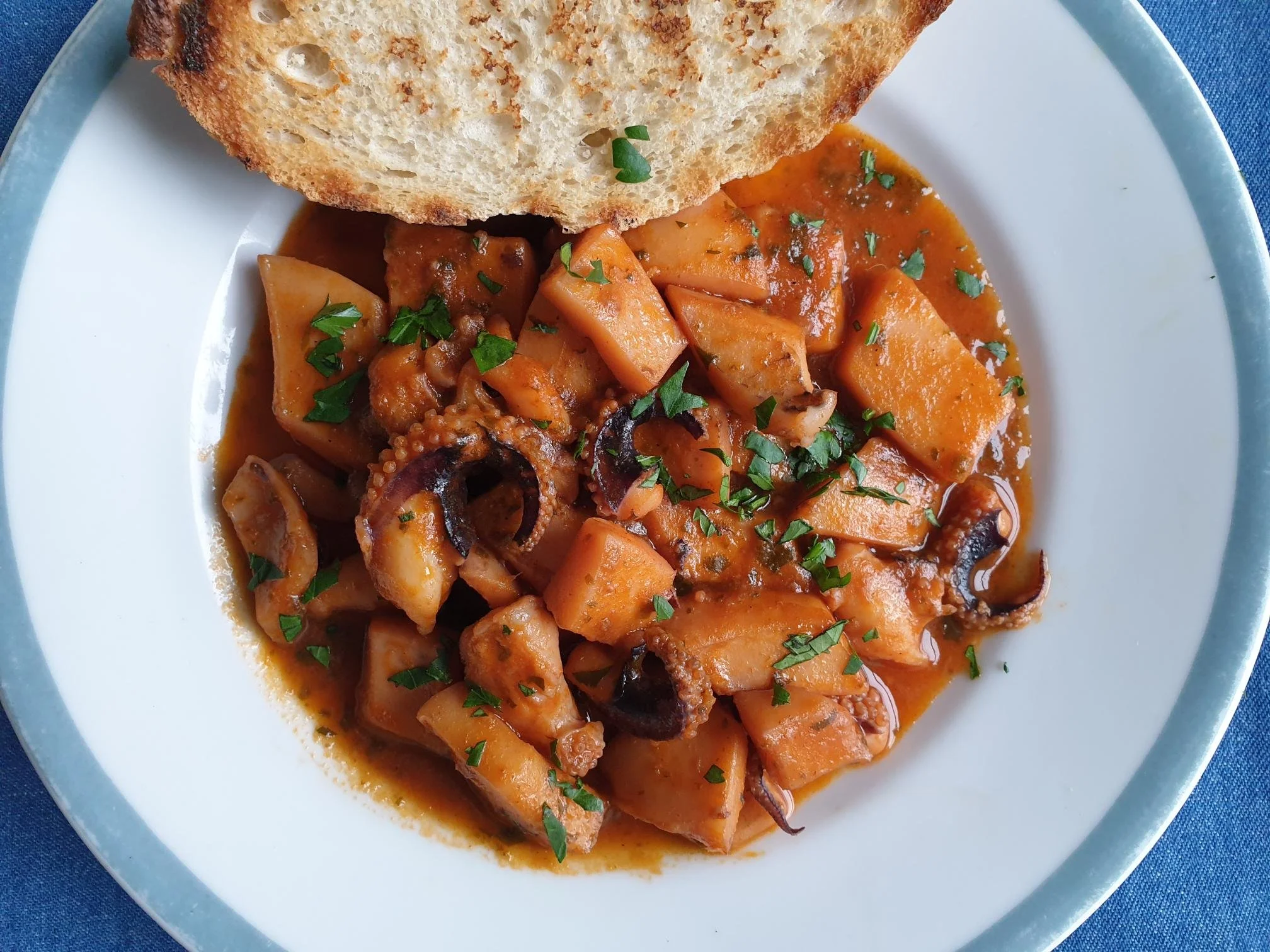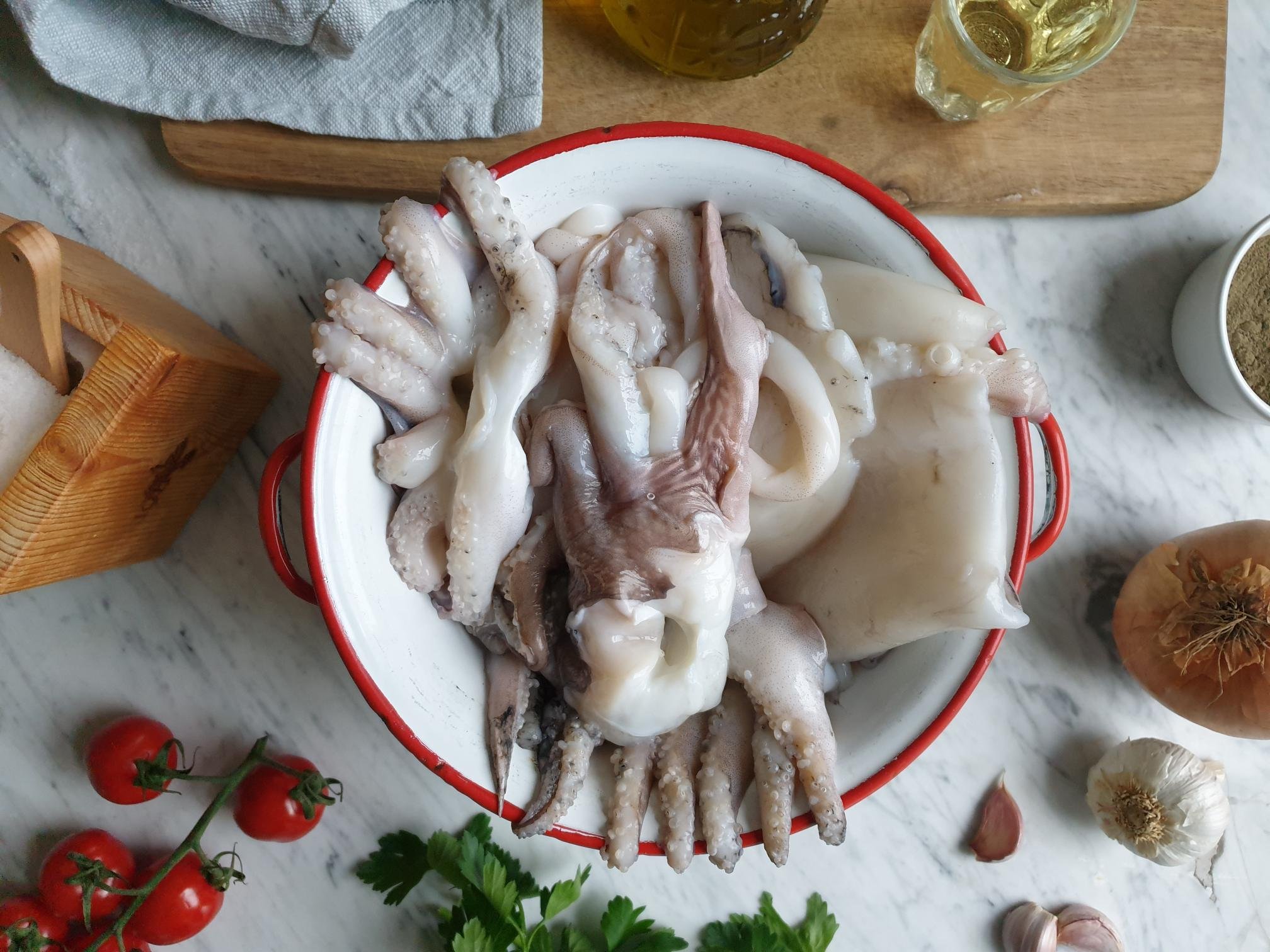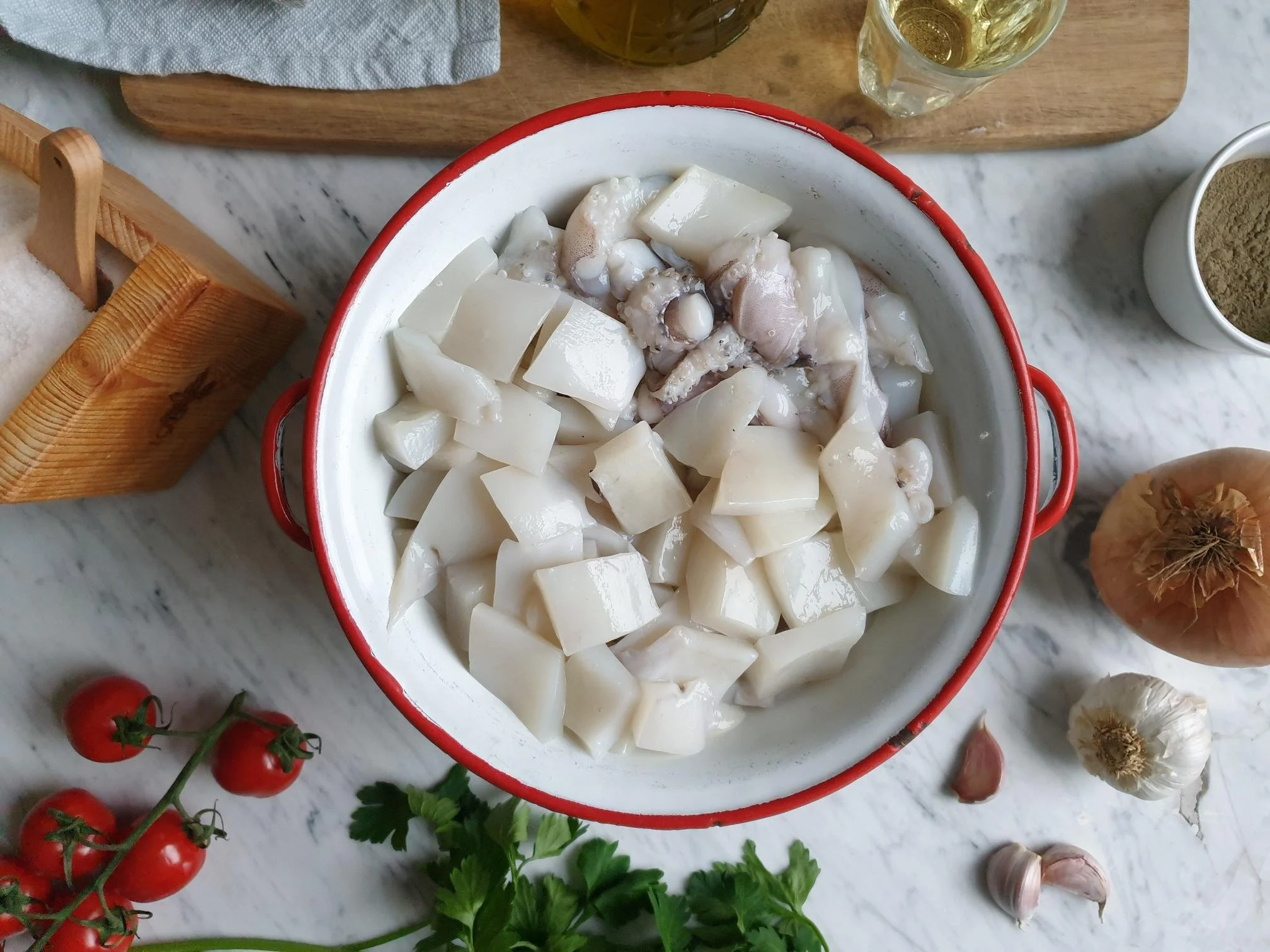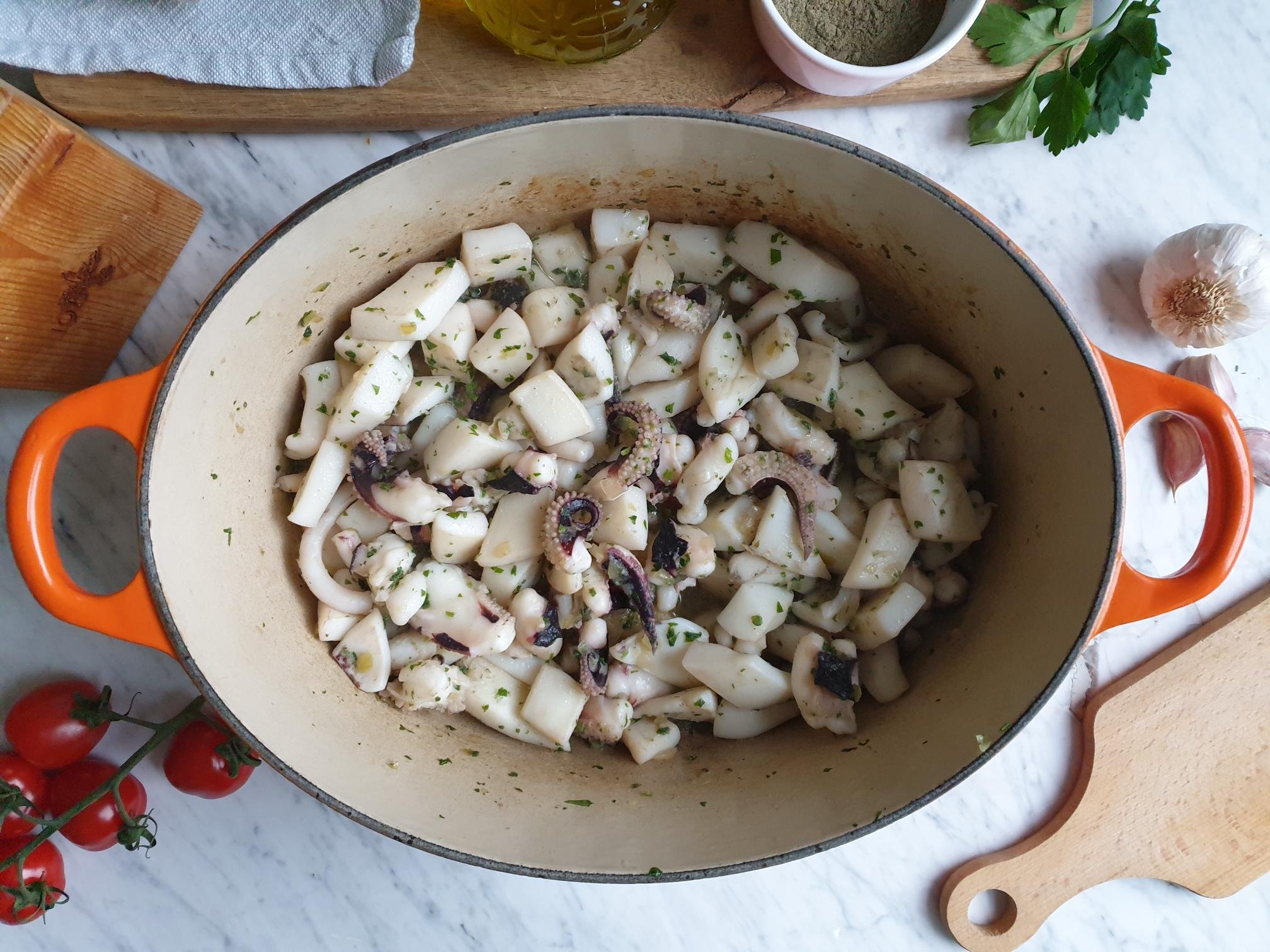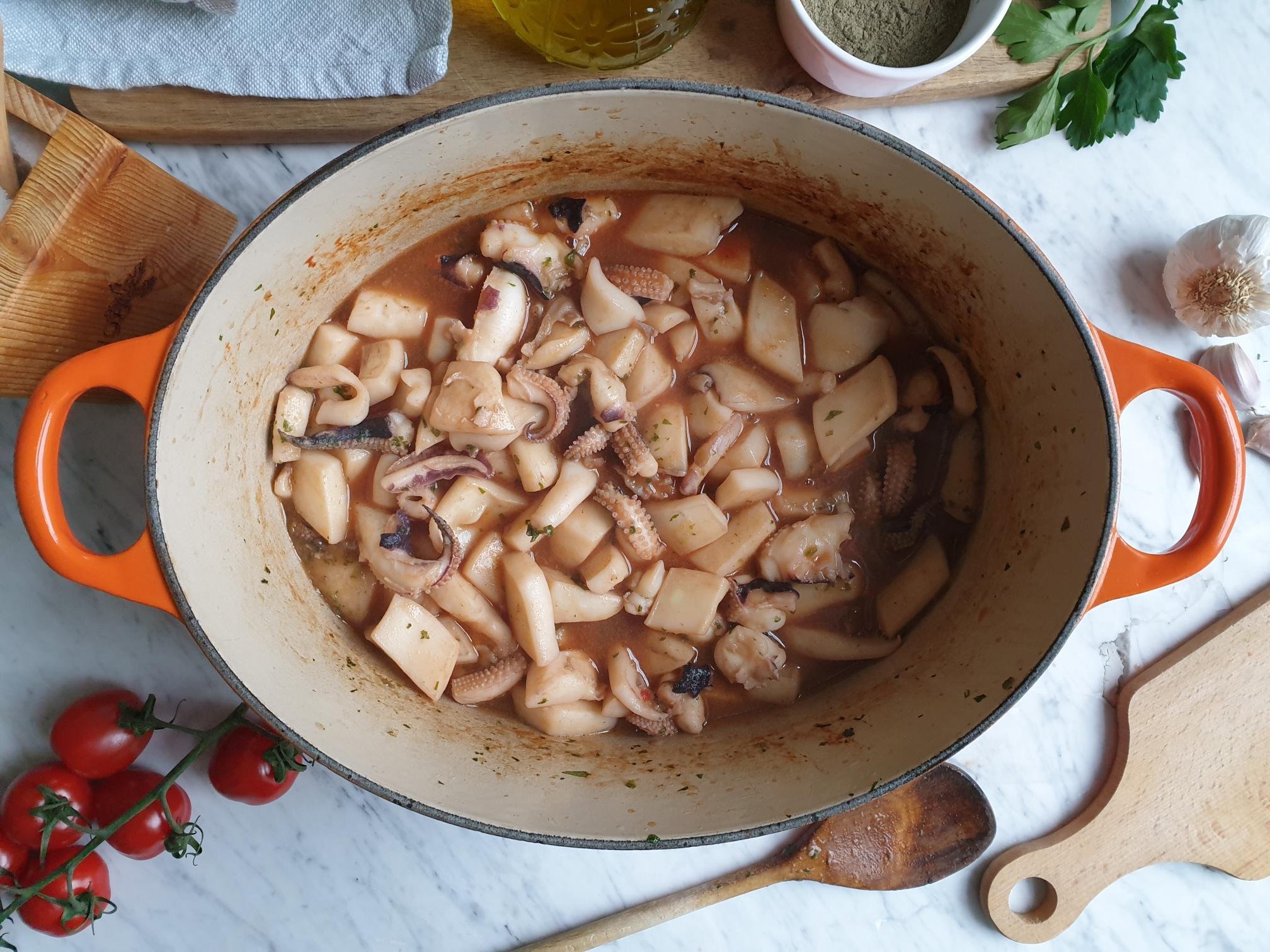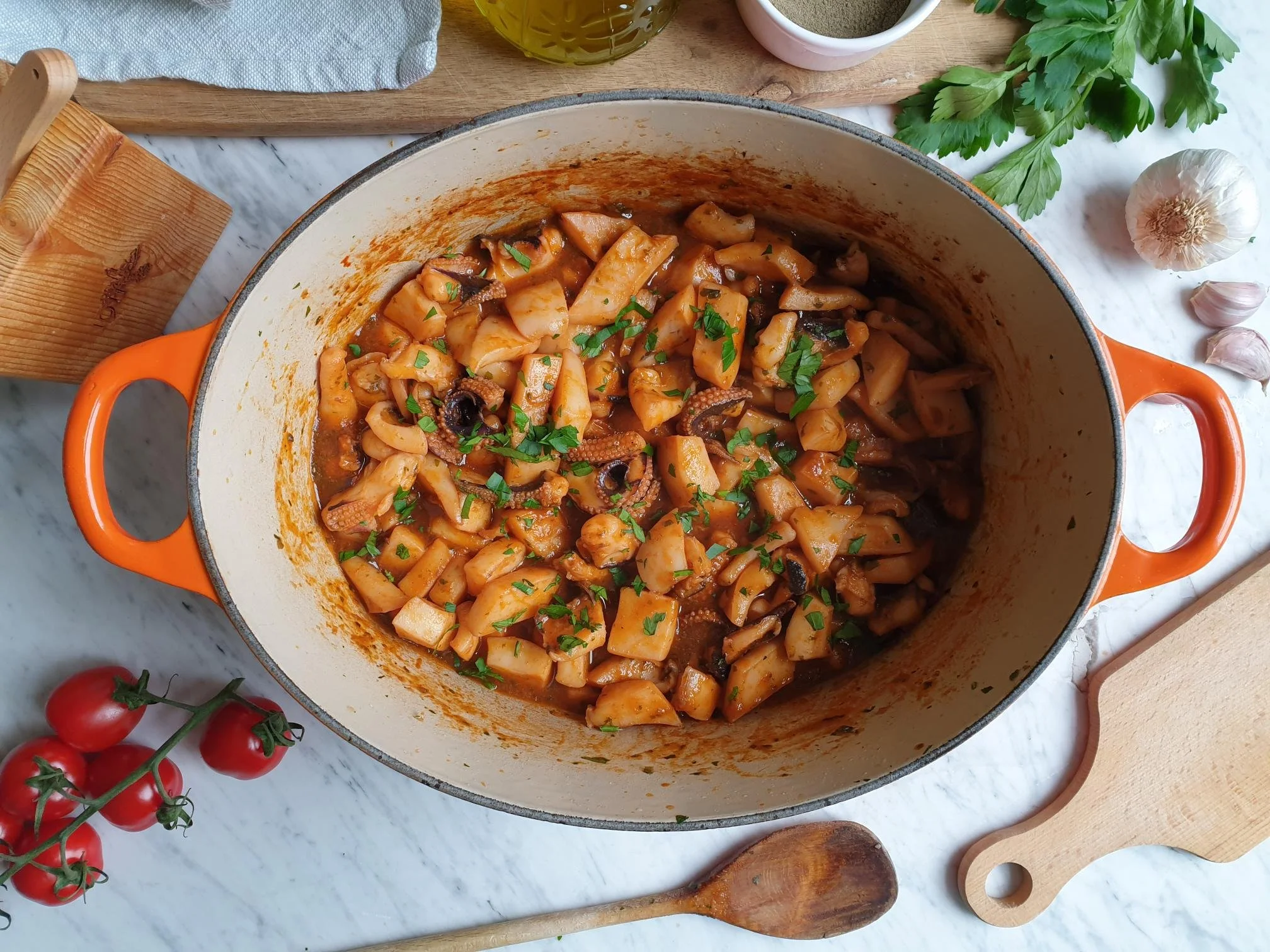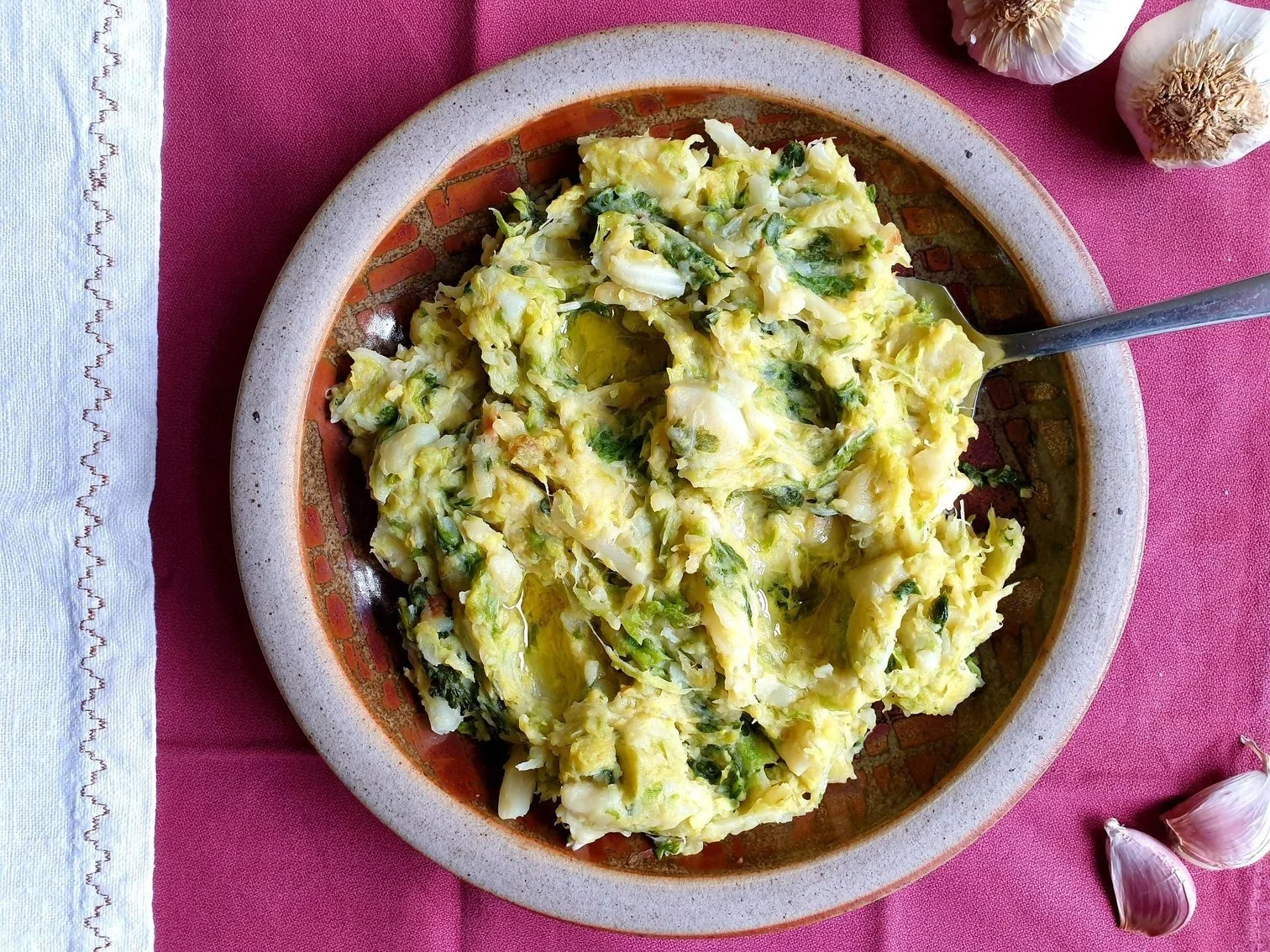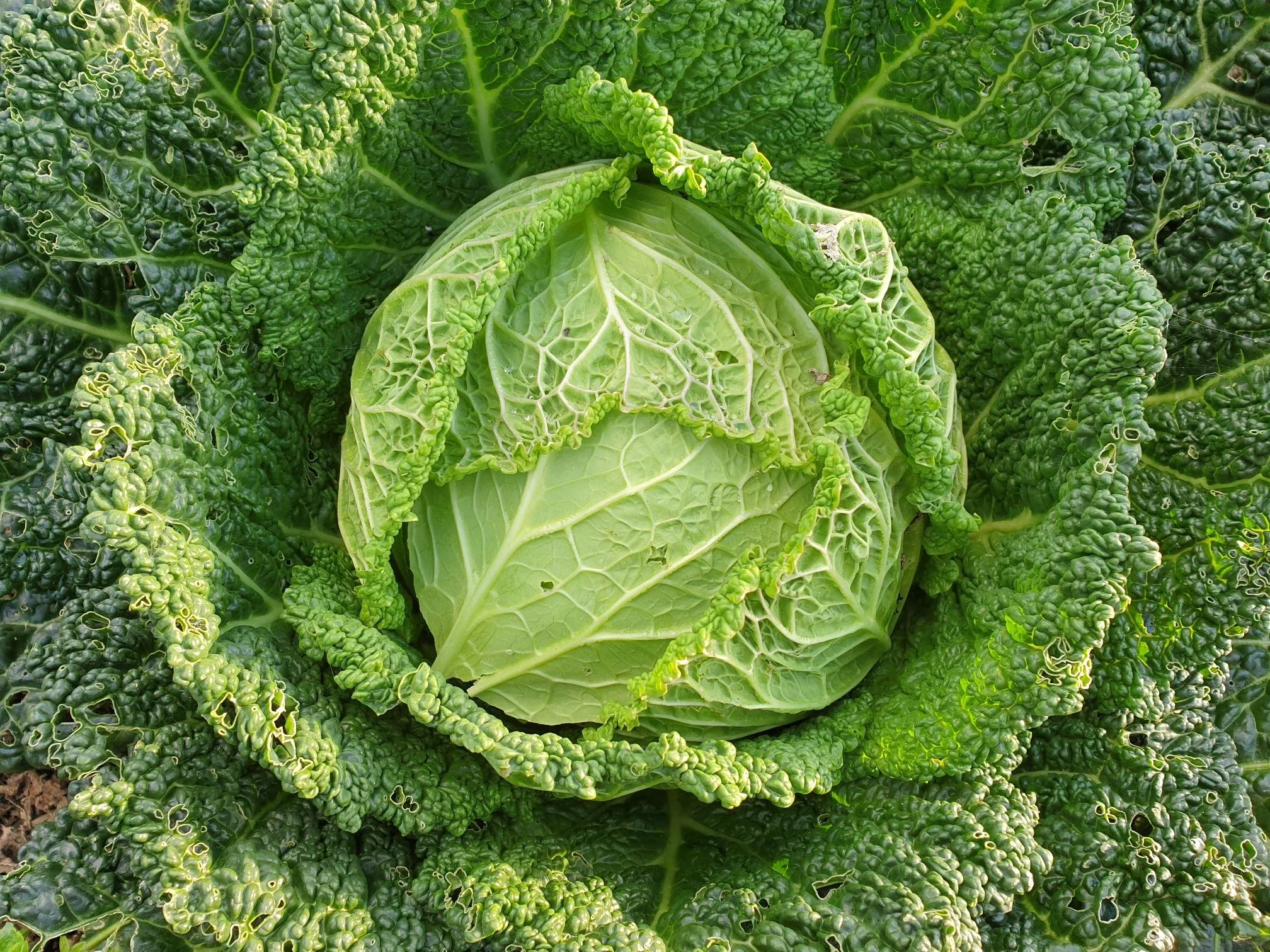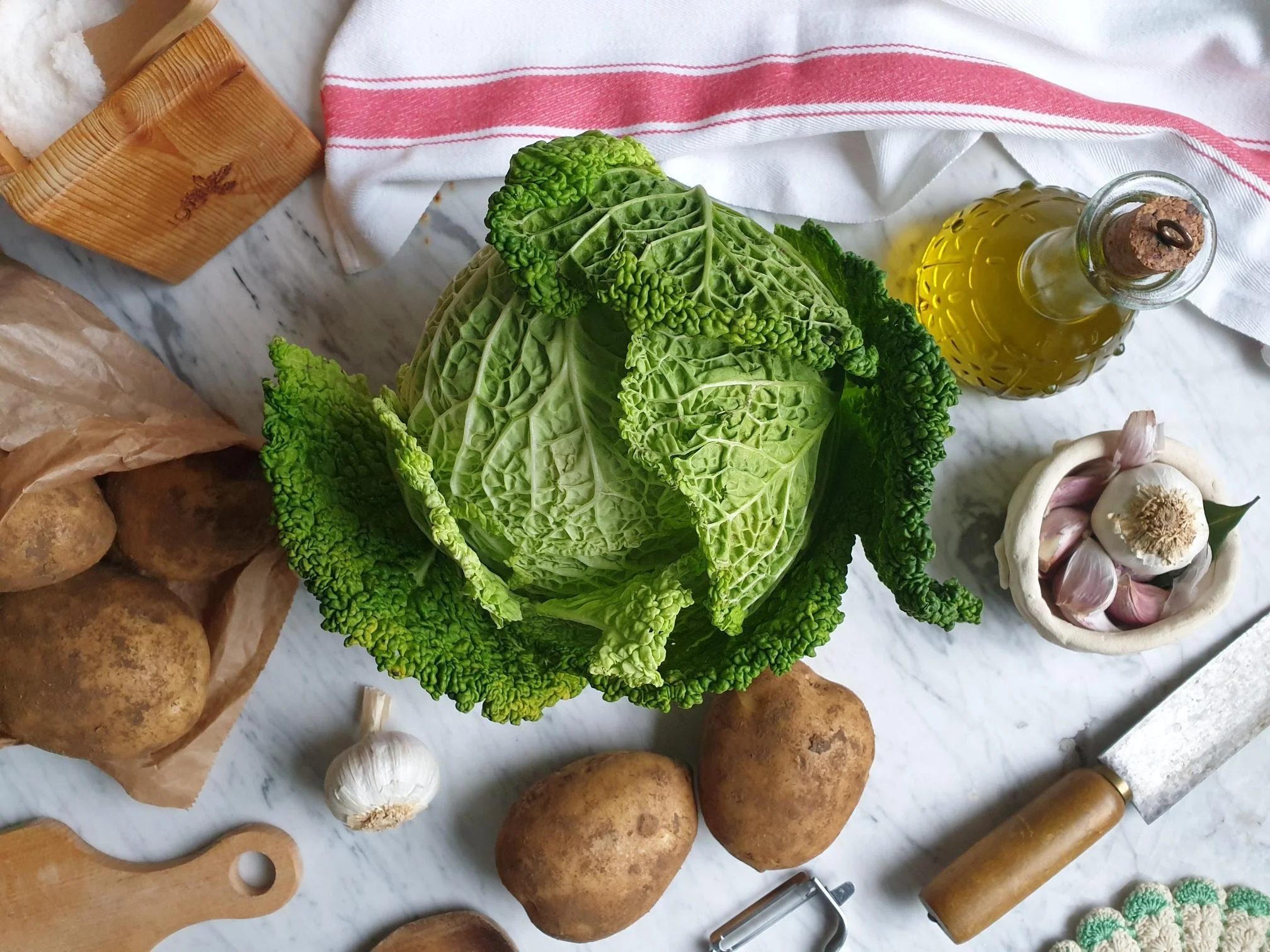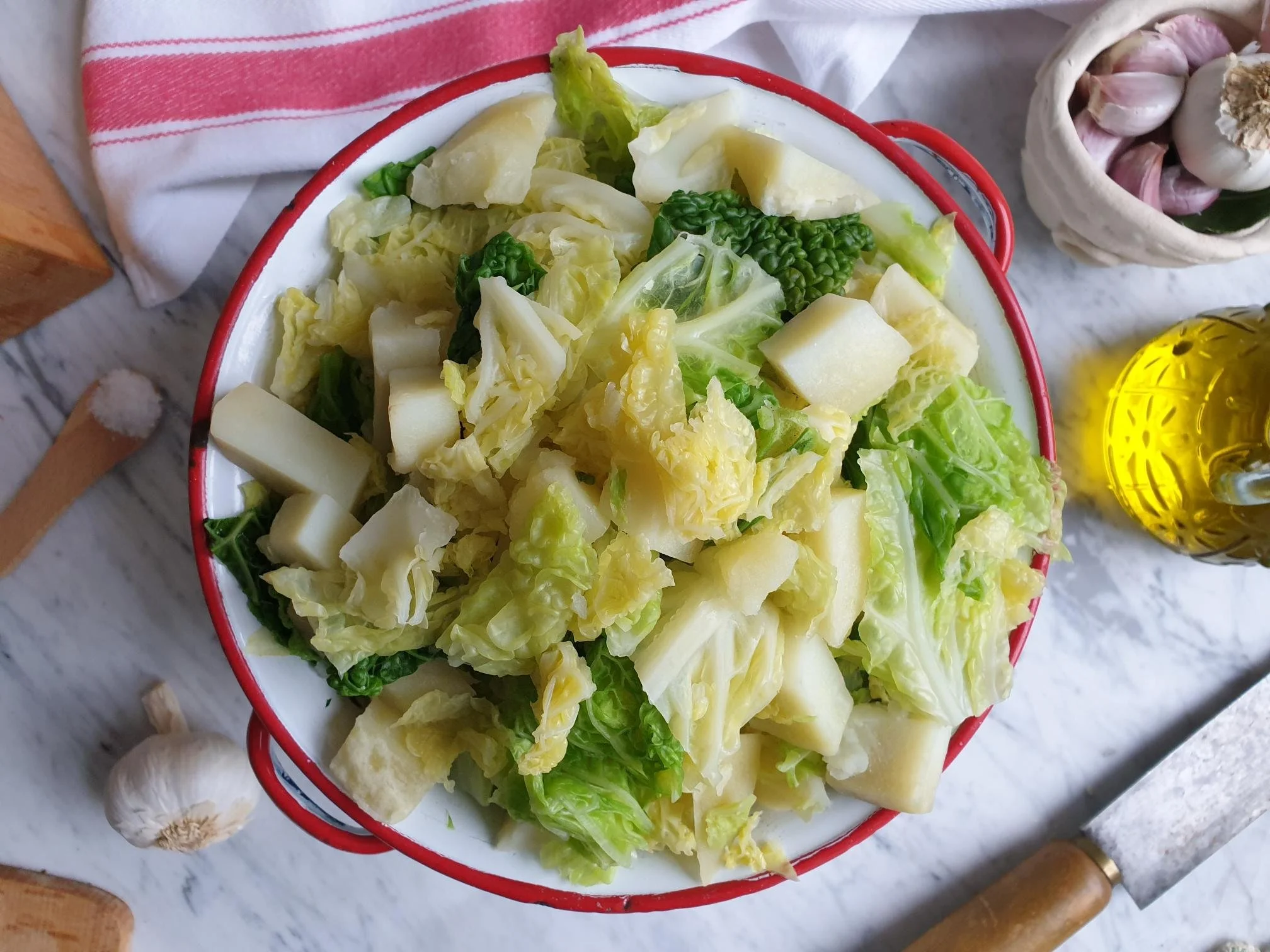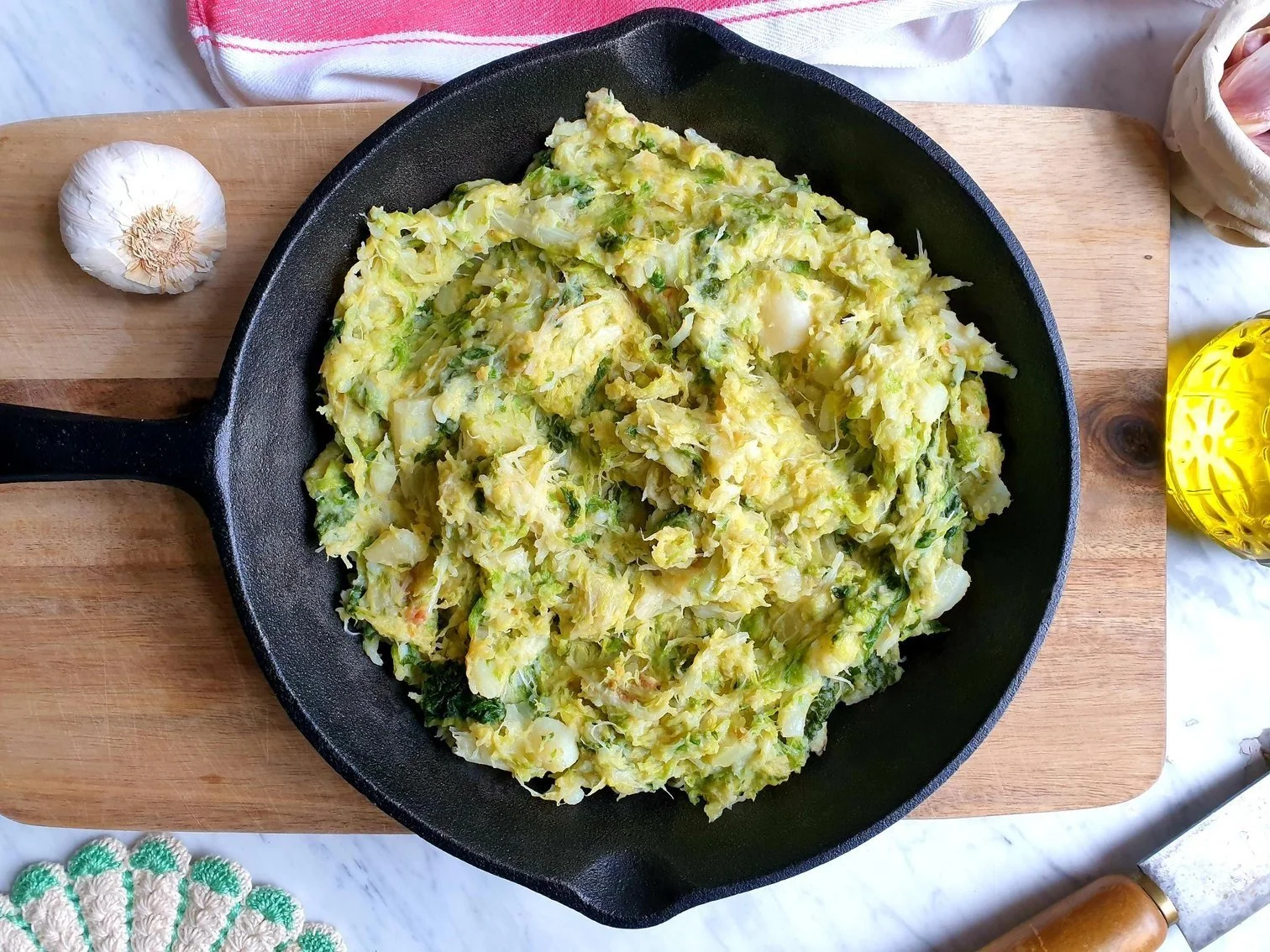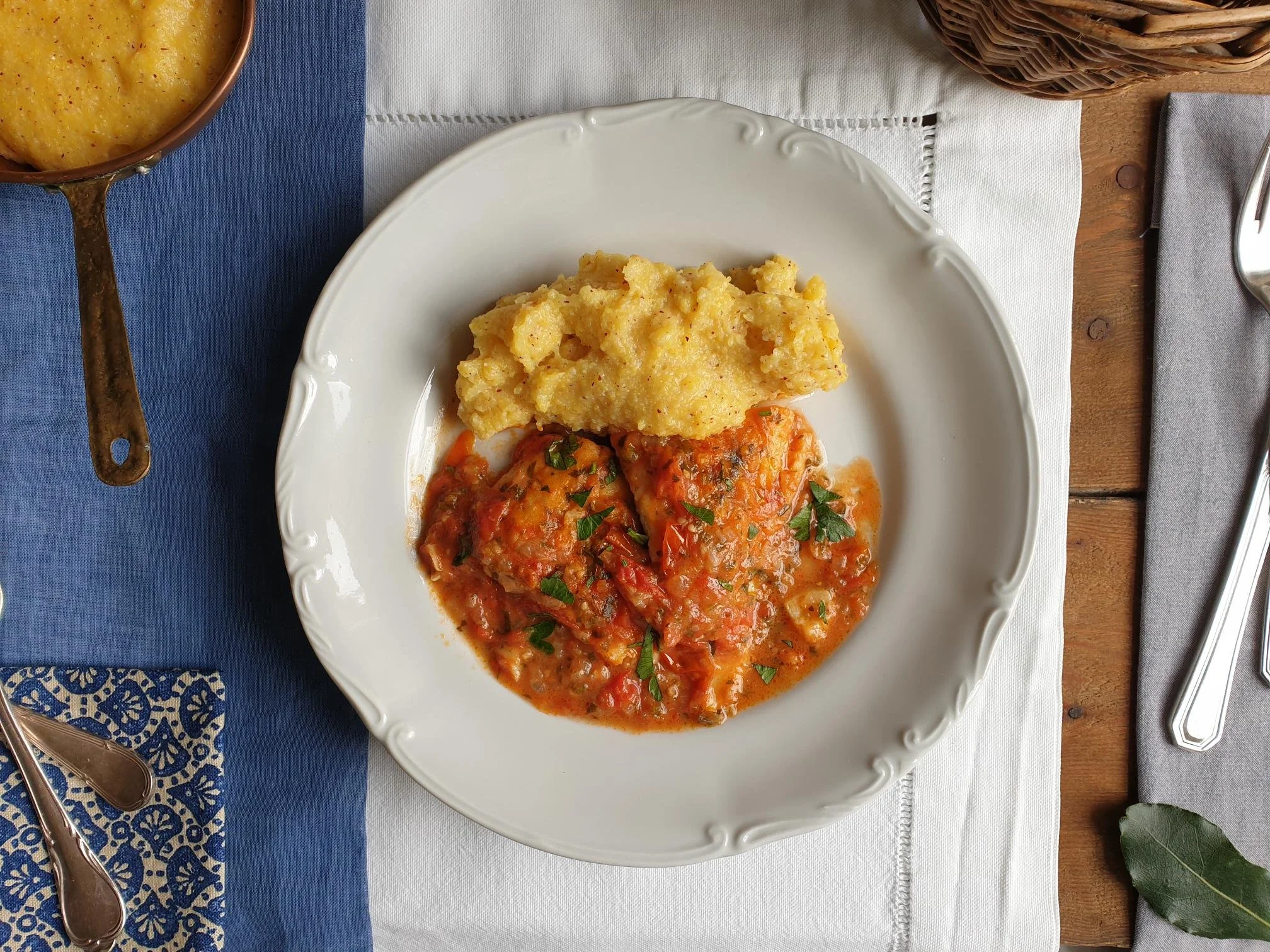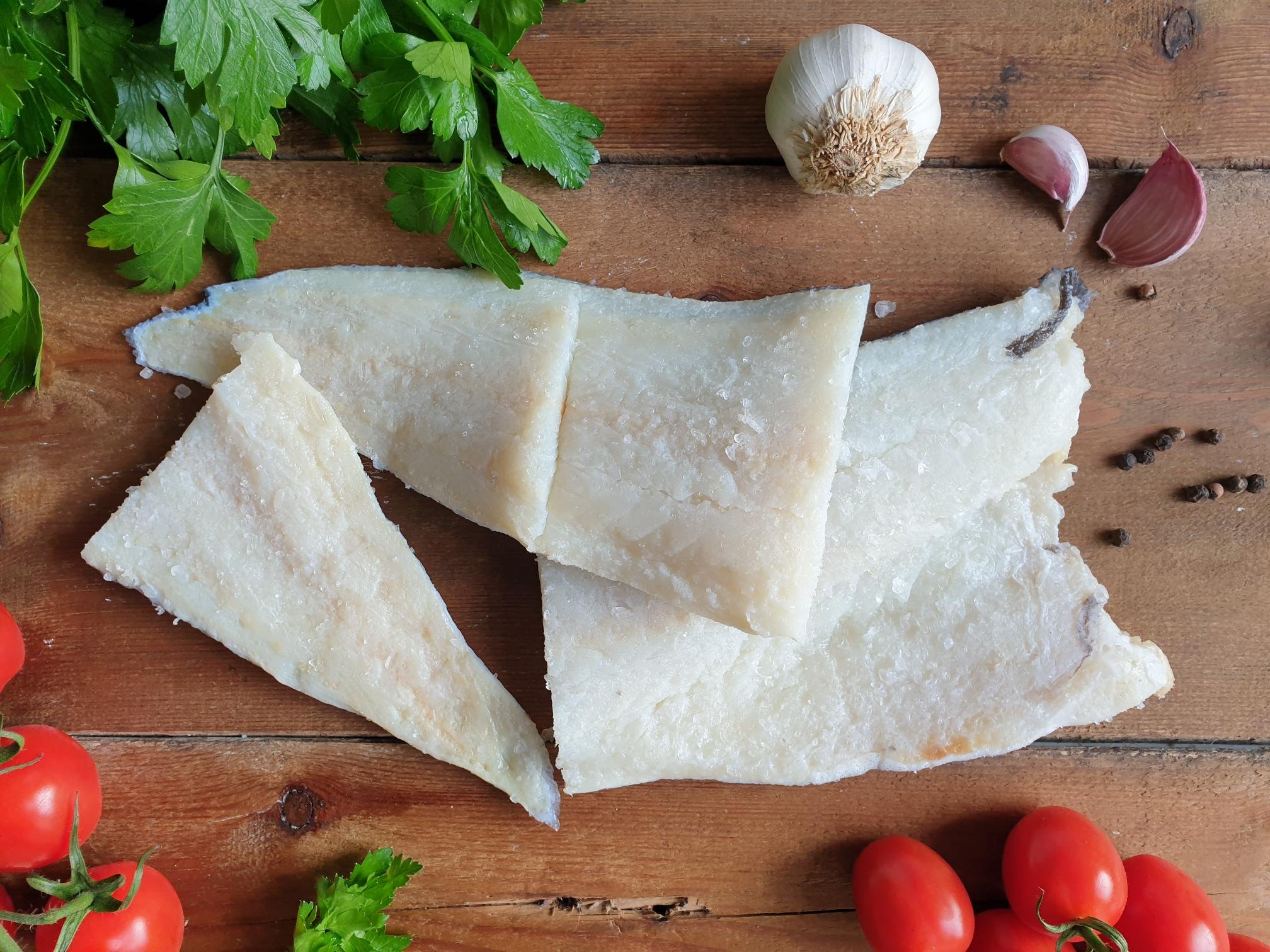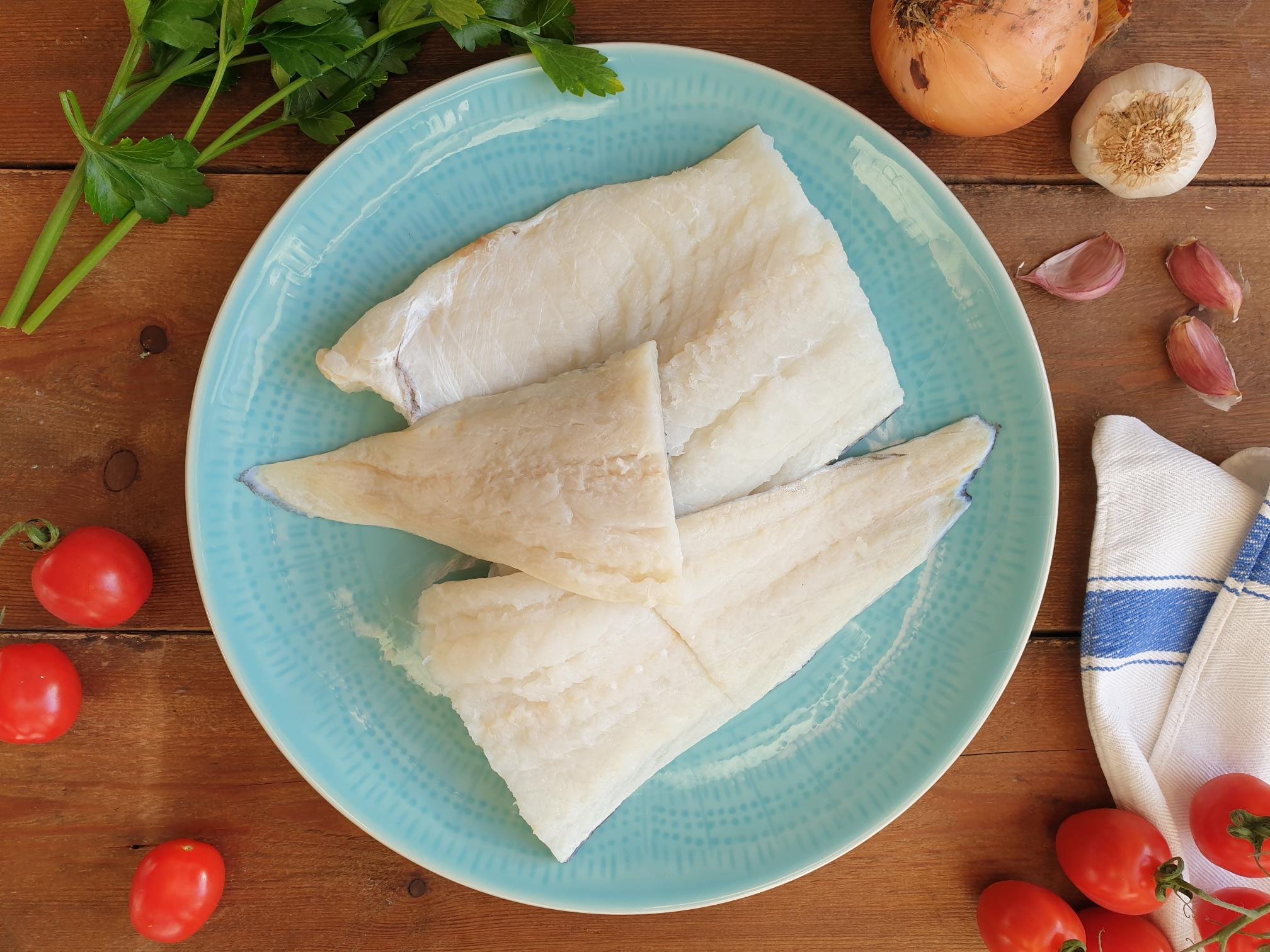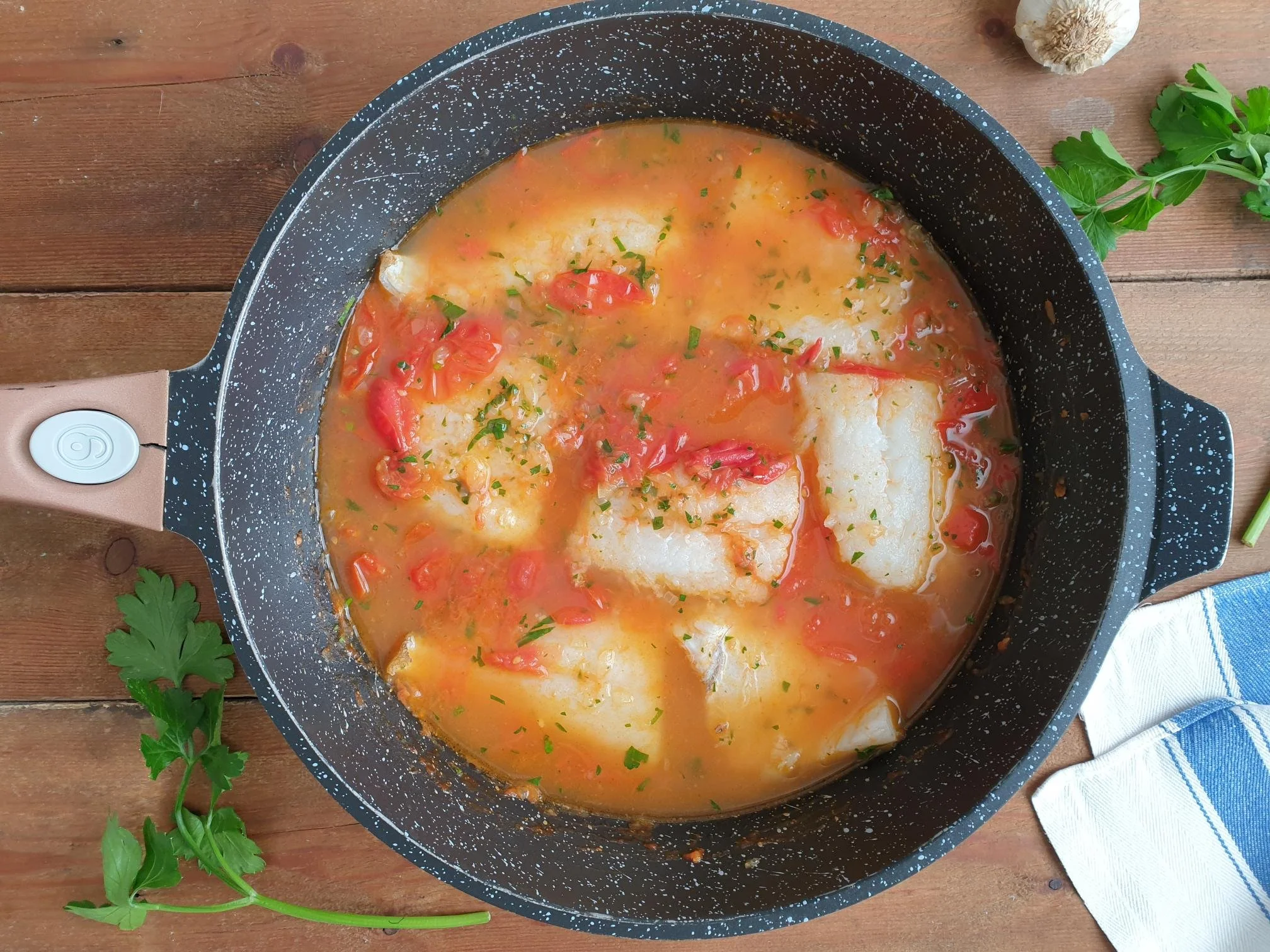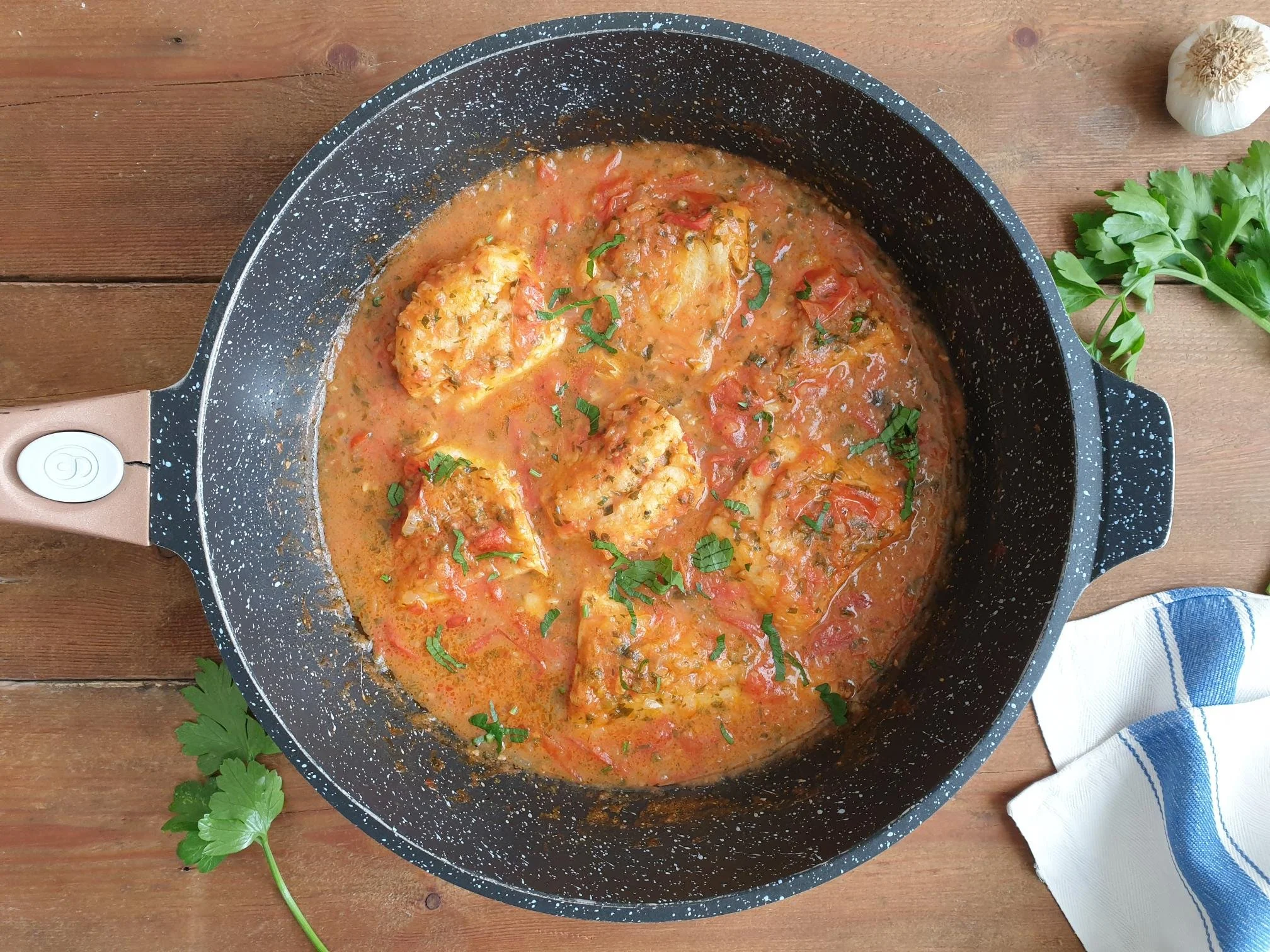Sea Bass Risotto Istrian Recipe
Sea bass risotto is light, creamy and flavoursome, it is made with very simple and delicate in flavour ingredients.
This dish is a true testimony to honest and uncomplicated cooking. It might not be the most colourful dish, it is modest, and humble in its appearance, but it most surely delivers in flavour. It will delight all the generations around the dinner table and will be enjoyed by the most reluctant fish eaters due to its very mild “fishy taste”.
This Venetian inspired risotto is made with fresh sea bass, a very much appreciated fish. It is one that is considered to be a real delicacy, and is very often represented in the antique mosaics by the Romans. A good quality fish stock is pretty much essential to the success of this risotto. Home made fish stock is very easy and quick to make, it is fresh, resourceful, sustainable and incredibly satisfying and economical since you are using up every part of the fish.
What are the origins of this type of risotto? The fishermen sold the precious filets of fish in the market, and so to provide for their families, they used the left-over bones and heads, which they cooked to form the most delicious stock that was then used for cooking this type of risotto.
Venetian style risotto is very popular along the Slovenian coast, where I come from, an area once part of ‘La Serenissima,’ the Most Serene Republic of Venice. Sea bass or sea bream risotto is found in most good fish restaurants and cooked in local households on a regular basis.
I am sharing here my family's recipe for this rustic fish based risotto, that can equally, and proudly sit on elegant plates during a more formal dining setting.
Recipe
Ingredients
Serves 4
Fish Stock
500g roughly, sea bass or sea bream (1 big fish or two smaller in size) washed, cleaned, gutted and scaled (fishmonger will be happy to do this for you)
You can use other type of sustainable white fish like hake, pollack, and flat fish, avoid oily fish such as salmon, mackerel, and tuna, as they are too fatty and will make your stock greasy and unpleasant.
You can make the stock using just the bones, again only from the white fish. You will need about 1kg of these, the fishmonger will sell them very cheaply or even given for free.
1 small bay leaf or ½ of big one (fresh or dry)
a few whole black peppercorns (about 6)
1 clove of garlic, peeled
1 carrot (about 40g), peeled
stick of celery (about 40g)
1 shallot or a piece of anion (about 40g)
small handful of fresh flat leaf parsley, washed
extra virgin olive oil, a drizzle
sea salt
Risotto
3 Tbsp extra virgin olive oil
1 shallot or onion (about 40g), peeled and finely chopped
300g risotto rice (like Vialone Nano, Arborio, Carnaroli)
fish chunks removed from previously cooked sea bass or sea bream
1 litre of hot fish stock
knob of butter
handful of freshly grated Parmiggiano Reggiano or Grana Padano cheese, optionala
small handful of fresh flat leaf parsley (about 4g), finely chopped
Method
Fish Stock
Start by preparing the fish stock.
Place the fish in a pan, big enough to accommodate the fish lying flat (if using 2 fishes lie them next to each other or one on top of the other).
Add a few black whole peppercorns, clove of garlic, bay leaf, a generous pinch of sea salt and about 1.5 litres of cold water.
Bring to boil, turn down the heat, cover with the lid, and gently cook the fish for about 10-15 minutes.
When almost cooked, remove from the water, place on a big plate and allow to cool a bit.
When cool enough to handle, remove the skin and the fish meat from the bones in medium size chunks, put them in the bowl, cover so the fish pieces do not dry, and set aside for later use.
Put the head and the bones back in the pot, in the same water in which the fish was cooked.Add a carrot, celery stick, shallot or onion, fresh flat leaf parsley and a drizzle of extra virgin olive oil. Cover with the lid and gently simmer for about 30 minutes.
Taste and adjust the seasoning.
Place the fine sieve over a saucepan and pass the stock through a sieve. Discard the head, bones and cooked down vegetables.
Put the saucepan with the stock back on the stove, on a very minimum heat, put the lid on and keep it warm and ready to hand for later use.
Risotto
Place the oil in a pan and gently sauté chopped shallots or onions until soft.
Add the risotto rice and toast a bit, stirring constantly to avoid sticking to the pan.
Add the fragments of sea bass or sea bream.
Start gradually adding ladles of hot fish stock, one at a time, allowing the liquid to be absorbed before adding more.
There should always be enough liquid just to cover the risotto.
Cook on a medium heat, stirring almost constantly, until the rice is cooked al dente, meaning fully cooked but still a bit firm when bitten.
Removing from the stove, add a knob of cold butter and a handful of freshly grated Parmiggiano Reggiano cheese and finely chopped fresh flat leaf parsley. Stir with a wooden spoon, quite vigorously, in order to develop its delicious creamy texture.
The risotto should be smooth and runny enough to be described by the Italians as risotto all'onda, meaning risotto on the wave.
Serve immediately while the risotto is still hot.
Just a thought
To cut the corners, you can make this risotto by using fresh sea bass or sea bream fillets and using a high quality store bought fish stock.
Sea bass risotto will keep in the fridge for a couple of days in an airtight container.
It can be enjoyed at room temperature as well, and is not suitable for freezing.
Wine Suggestion
Soave Classico DOC "Calvarino" 2020 - Pieropan

